|
This is one of the four major basilicas in Rome, all with Holy Doors. The others being St Peter’s, St John Lateran, and St Paul outside the walls. In the mid-4th century, the then pope received a dream containing a request from Mary, mother of Jesus, for a church to be built in her honour at a place that would be pointed out to him. Then in the hottest part of the year snow falls in Rome – that’s the place. On the anniversary of that fall of snow in 434 AD this heaven-requested basilica was consecrated. On that anniversary, 5 August, the Church continues to celebrate the optional memorial of the Dedication of the Basilica of Saint Mary Major. Close up of apse and altar area It is truly breathtaking when you walk in for the first time. The mosaics you can see here date from the 5th century. Main body of the nave, facing the entrance. From this photo you can see that the basilica is built in the very early basilica shape: long nave, colonnades giving entry to side naves, and a large apse. The opulent parts you can see date mostly from the 16th and 17th centuries. Where we had Mass today This chapel is officially known as the Borghese Chapel, and its major focal point is the beloved icon of Mary, Salus Populi Romani – Salvation of the people of Rome. Mass was (low style) Ad Orientem, since the altar is attached to the wall, and not free-standing, the bishop and priests offered Mass with their backs to us. Close up Salus Populi Romani The reason the icon bears this name is due to a miracle that saved the people of Rome from plague. Later in history, Pope St Pius V gathered the people of God around this icon to pray the rosary begging God for victory in the battle of Lepanto. To commemorate that victory each year the Church celebrates the memorial of Our Lady of the Rosary on 7 October. More recently, Pope St John Paul II commissioned a copy of this icon to accompany the World Youth Day Cross around the world. Many recent popes have prayed before this icon to seek the intercession of Mary, mother of Jesus, as they begin their apostolic journeys around the world. Exterior The large pillar at the front topped with a Marian statue, and the very tall bell tower behind the basilica of St Mary Major are its distinguishing exterior features. Which is important, because after a while all these big, wonderful churches start to look the same from the outside – especially when you are visiting four churches in one day. Vincent Cavanagh #bbwyd 29 Jul 2023, 7.07pm Italy | 30 Jul 2023, 3.07am Sydney
0 Comments
The first thing we did today was to tour the Vatican Museums. They are best seen before the crowds build up. Part of that tour was through the Sistine Chapel. That Chapel is where you can see Michelangelo’s famous Last Judgements; it is also where the cardinals gather to elect a new pope. The next thing was to visit St Peter’s Basilica. In here St Peter, chief of the Apostles, has his tomb. As do many other popes from throughout history. Here we are, waiting in line to go through security, before we can enter St Peter’s. If you can find a person looking towards the camera, the one with a white hat, that’s Lachlan, one of the members in our small group. This Holy Door is kept closed. It is only opened during a Holy Year. When it is open during a Holy Year, you go through it on your knees, seeking pardon for your sins. That’s why it is also known as the Door of Mercy. The next Holy Year is 2025, from Christmas Eve 2024 to Epiphany 2026, with a theme of “Pilgrims of Hope”. On the panels of the Holy Door are scenes from the Gospel, including the Annunciation, the Baptism of Jesus, the death of Jesus, and His resurrection. Statue of St John Eudes inside St Peter's Basilica Looking up along the nave of St Peter’s, the statue of this saint caught my eye. My birthday falls on the day the Church celebrates his optional memorial. An optional memorial means that any priest saying Mass that day can choose either to remember him, or not. St John Eudes had a particular devotion to the Sacred Heart of Jesus and to the Immaculate Heart of Mary – that’s why he is depicted with an open cloak showing those Two Hearts, one surmounted with a cross, burning, and circled by thorns, and the other also burning but pieced by a sword. This saint wrote the specific Mass texts and Liturgy of the Hours texts for the feast days of the Sacred Heart and the Immaculate Heart; he also founded a religious order of women to give refuge to those seeking to escape a life of prostitution. Our tour guide was a deacon from Holland, that’s why you can see a partial clerical collar. He was alive during the pontificate of Pope St John XXIII. Also in this photo are fellow Broken Bay pilgrims Sean (holding the flag) and Jess. Pope St John XXIII Look carefully and see why he is still known as the smiling Pope. This is the Pope who was elected in 1958, just before his 77th birthday, and who inaugurated the Second Vatican Council. When he died of stomach cancer in 1963, Pope Saint Paul VI completed the Second Vatican Council. Pope St John XXIII was canonised in 2014. Vincent Cavanagh #bbwyd 29 Jul 2023, 1.41pm Italy | 29 Jul 2023, 9.41pm Sydney Basilica of St Rita, exterior Where the basilica and Augustinian convent sits is higher up the hill that the town of Cascia is built upon. It took us a hike of at least 5 or 6 different staircases to get to the Basilica. Inside is the incorrupt body of St Rita, who lived from 1381 till 1457, and was canonised in the year 1900. Over the centuries her skin has darkened, just like St Catherine of Bologna. Most of you would know that St Jude is a patron saint of impossible cases; so is St Rita. St Rita wanted to be a nun, but in obedience she married at a young age, and had two sons. It was a difficult marriage, and her husband was abusive. Her kindness, prayer and patience eventually obtained the conversion of her husband. But then he got murdered due to vendetta, and her sons wanted to avenge their father. Rita pleaded with God for them to let go of their fury, else for her sons to die holy deaths before they could carry out their vendetta plans. Within a year, both sons had fallen ill, and died holy deaths. Due to all the feuding, the convent didn’t want her. But Rita prayed, and sought the intercession of St John the Baptist, St Augustine of Hippo, and St Nicholas Tolentino, and eventually she was admitted. In the years that followed God gave her the experience of sharing one of the thorn wounds of Jesus. It was painful, unpleasant to look at, and had an unpleasant odour. But when Rita died, that wound gave off a very sweet smell. Basilica of St Rita, interior To the left, out of range of the photo, is the body of St Rita. The colourful paintings on the walls and ceiling show images of Saints venerated by the Augustinian order. The two bishops held aloft by angels are likely to be St Ambrose and St Augustine. Eucharistic Miracle of Cascia In the tiny monstrance surrounded by spherical rock is the Eucharistic Miracle of Cascia. It didn’t happen here, but it is venerated here. Around 1330 a priest got a sick call, and instead of placing the consecrated host in a pyx, he placed it between the pages of his breviary. When he got to the sick man, he opened his breviary to find both pages stained with human blood. Fearful, and not knowing what to do, he sought out a holy priest in Siena, and relinquished the pages to him. On both sides of the photograph, you can see vertical walls with medallion-like shapes on them. One depicts the blood stains on the left-hand page, and the other depicts the blood stains on the right-hand page. Both appear to be side-on views of the face of Jesus. Blessed Maria Teresa Fasce 1881-1947 Maria was in her late teens when all the preparations for the canonization of St Rita were happening. It inspired her to join the same convent that St Rita lived in. However the convent wasn’t at peace because the older nuns wanted the traditional observance of the Rule of St Augustine and the younger nuns wanted easier lives. After about 2 years of the conflict, Maria took the difficult step of leaving the convent, and spent time in prayer seeking what God wanted. When she returned to the convent the situation hadn’t changed, but she stayed, took her vows, and wrote to the religious superiors about the situation inside the convent. In 1914, at the age of 33 she became mistress of novices, then in 1917 vicar, and in 1920 she was elected abbess and remained so for the rest of her life. Maria set about first building an orphanage for girls, and then raising funds to allow the rebuilding of the shrine of St Rita so that it could accommodate all the pilgrims she sensed would be coming. Sometime during World War II a group of soldiers came to Cascia intending to rape the nuns and orphaned girls – but Maria went out to the soldiers in defense of those under her care, and the soldiers slinked away. In her latter years ill health was Maria’s portion, and the wooden carry chair you can see behind her body was used by the nuns to get her from place to place. Around 3 months before the Basilica of St Rita was completed, Maria died. In 1997 she was beatified by Pope St John Paul II. Vincent Cavanagh #bbwyd 28 Jul 2023, 9.41am Italy | 28 Jul 2023, 5.41pm Sydney There are so many holy places in Assisi! This is going to be an extra-long one. However, it will be only one photo from each place. Despite having far more photos than one from each place! On Wednesday 26 July when we arrived in Assisi, we went to visit the basilica of Our Lady of the Angels. On Thursday we did a LOT of walking; and visited a large number of the holy places. On Friday we farewelled Assisi with Mass at the basilica of St Francis of Assisi. Assisi itself is a large medieval town surrounded by a wall. It sits on top of a mountain some 400m above sea level. Walking is about the only way to get around, since it is full of narrow streets that are either for pedestrians only or for one way traffic. Nativity high-relief, Basilica of Our Lady of the Angels Inside this basilica is the little church which St Francis and his helpers restored, and around which the first members of the Franciscan order built their huts to dwell in. It was in one of these huts or cells that St Francis of Assisi died. That cell has been preserved, and is known today as the Chapel of the Transit. Basilica of St Clare, scenic view Within this basilica is the tomb of St Clare, foundress of the Poor Clare order; and also the tomb of her sister, St Agnes. There was definitely a strong/calm presence in the chapel inside this basilica which contains the original San Damiano cross. That’s the cross Jesus spoke to St Francis through, and said to him, ‘Go, rebuild My Church’. Cloister of San Damiano This is where the Poor Clare religious order began, and where St Clare and her nuns lived for the first 40 years, and where St Clare died. It was in this locality that the San Damiano cross was used by God to speak to St Francis. Eremo delle carceri Small isolated hermitages near a deep gorge; and further and higher up the mountain This is the place where St Francis would withdraw from the world and pray for extended periods of time. Over the centuries these small, isolated dwellings have been built to house those called to live lives of prayerful solitude with God. Where we had Mass in the open air, in the vicinity of the hermitages On the right-hand side of the chapel is Fr Sam French with white hat and with red ribbon on his backpack. He is the red bus chaplain. Near the altar Fr Roger Delmonte is about to put on the alb part of his priestly vestments. He is the yellow bus chaplain. Church of Mary, Seat of Wisdom, a.k.a. Santa Mary sopra Minerva Remember to always look up, and you will find treasures that others miss. This church used to be in Roman times a temple to the goddess Minerva. It became a church in the 16th century and was decorated in the Baroque style in the 17th century. On the ceiling is an image of St Philip Neri, in an attitude of prayerful supplication to God, and dressed in priestly robes. He is the founder of the Congregation of the Oratory, a society of apostolic life for men. Brisbane has an Oratory in Formation. This seated gentleman is our guide through Assisi for both 27 and 28 July. He is like a loving, but firm, Italian grandfather. His sense and love of the Faith is evident in his whole person. Chiesa Nuovo, interior This is a view of the impressive interior of the church that was built on the site of St Francis’ family home. Stable where St Francis was born Just like Jesus, St Francis of Assisi came into the world in a stable. This same stable where we are standing with Eduardo our guide; where it is now possible to celebrate Holy Mass. Church of St Mary Major, including the sanctuary of the Renunciation (of St Francis) Santa Maria Maggiore or St Mary Major is the title given to the most prominent church named in honour of Mary, mother of Jesus, in the various regions of Italy. This one is in Assisi. The most well-known one is in Rome. Part of this church contains an area called the Sanctuary of the Renunciation, remembering the exact spot where St Francis chose to reject the world and to live solely for God. It is in this sanctuary that the incorrupt body of Blessed Carlo Acutis has been placed. He died in 2006 from leukemia, at the age of 15, after a life of cheerfulness, computer skills and deep devotion to the Eucharist. He is one of the patron saints of World Youth Day Lisbon. Basilica of St Francis of Assisi, exterior This basilica has two levels, an upper level and a lower level. The body of St Francis of Assisi is in a chapel on the lower level. Before we went in for Mass, there was a group photograph. Mass itself was in the chapel of Fr Leo. While Fr Leo wasn’t a founding member of the Franciscan order, he still had a significant impact – being St Francis’ confessor until St Francis’ death, and he also assisted St Clare when she died. Fr Leo, a.k.a. Br Leo, is also buried in this basilica. Vincent Cavanagh #bbwyd 28 Jul 2023, 7.57am Italy | 28 Jul 2023, 3.57pm Sydney Cathedral Baptistry It was traditional for churches of this era to have a baptistry separate from the church. Reinforcing the idea that baptism had to be received before you entered the doors of the church and participated in the Eucharist. Centuries later the baptismal font or baptismal chapel was placed near the main doors of the church. St Mary’s Cathedral in Sydney is like that. Many Australian churches built after World War II have the baptismal font to one side of the main sanctuary. Cathedral Façade This cathedral goes by many names, the Cathedral of Santa Maria Assunta, Church of the Assumption, Cathedral of St Mary of the Assumption. The façade took a very long time to build, starting in 1284 and finishing between 1370 and 1380. Looking down the Cathedral Nave The interior is spectacular, expressing the deep reverence of the Sienese people towards God, and their love for Mary, mother of Jesus. In this cathedral is the icon of ‘Madonna del Voto’. It is considered to be miraculous because when the icon was processed around the city in 1630, the plague stopped in Siena. Cathedral cupola and mosaic floor In this photo you can see the interior of the dome’s cupola, as well as the intricate mosaic floor surrounded by guard-rails to preserve it. But it also gives you glimpses of the paintings, sculptures and side chapels throughout the cathedral. Cathedral Piccolomini Library Piccolomini was the surname of Pope Pius II, who grew up in this city. His nephew, who became Pope Pius III, commissioned this library to house his uncle’s collection of books and hand-illustrated manuscripts. Around the walls of the library are these stunning frescoes depicting the life of Pope Pius II. Vincent Cavanagh #bbwyd 26 Jul 2023, 10.58pm Italy | 27 Jul 2023, 6.58am Sydney Technically it is the Basilica of St Catherine and St Dominic [Basilica Cateriniana San Domenico]. Here is preserved the head of St Catherine of Siena, doctor of the Church. Her body rests in Rome. The exterior doesn’t inspire, but it is how all churches of that kind of antiquity look without their magnificent facades. At the far end of this photograph is the main altar, where we had Mass for the memorial of St Joachim and St Anne, parents of Mary, mother of Jesus. This memorial has also become known as Grandparent’s Day - because these saints are the grandparents of Jesus. It is a very big church, and this photo doesn’t do justice to the various side altars. The variety of unusual flags caught my attention. The stained glass behind the main altar is a 20th century replacement of the original stained glass, which was damaged during World War II. There are pews around the main altar, but they are almost invisible from this angle and from this distance. Badges of the 17 Wards (or Contrada) of the city-state of Siena They match the flags inside the basilica, and thankfully explain why they are there. From medieval times Siena has been governed using a Ward system, which they call Contrada, and each Contrada is very proud of its unique identity, as well as being competitive with the other Contrada. Yes, we are all starting to get confused about where we’ve been; and asking ourselves ‘In which church was this photo I took?’. Vincent Cavanagh #bbwyd 26 Jul 2023, 10.41pm Italy | 27 Jul 2023, 6.41am Sydney Looking down upon Florence from the Piazzale Michelangelo Photo by Kelly Paget, administrative leader of the pilgrimage We got up to that scenic spot because firstly we had spare time on our way back to the hotel, and secondly because many members of the Green bus decided to stay in Florence CBD for dinner and then make their own way back to the hotel by train, bus, or taxi/uber. Any domes that should be visible, are hidden by bodies. From left to right are seminarian Rosan, seminarian Paul, myself, Yellow bus chaplain Fr Roger, Oliver, Natalie, and Adeline. We’ve all been appreciating Adeline’s talents as a singer and cantor during the pilgrimage. Vincent Cavanagh #bbwyd 25 Jul 2023, 8.01pm Italy | 26 Jul 2023, 4.01am Sydney Inside the Academy of Fine Arts our guide is showing us Michelangelo’s unfinished “Atlas”. Technically it is the ‘Atlas slave’ because it was part of a series of sculptures now known collectively as ‘The Slaves’. It was designed to be viewed between the young slave and the awakening slave. In Greek mythology Atlas was a being condemned to bear the weight of the heavens on his shoulders. Just a few words about the guide in this photo. You could almost describe him like one of the prophets from the Old Testament. He appeared out of nowhere – more than 20 minutes after our tour was due to start – was electrifying in his speech, full of love and awe for God, and was gone in an instant, like the Spirit of the Lord. He was on a constant rotation, going in with one group, leaving them inside, and going out to bring in another group. Not to be corny, but he did make the work and life of Michelangelo come Alive. I don’t think that I either knew or remembered that Michelangelo carved his statues from Front to Back – not the Hollywood/Looney Tunes stereotype of chiselling around the marble from all angles. And of course the Academy also contains Michelangelo's 'David'. It is impressive to look at from every angle. But it is more impressive when you remember the story behind it. David has his sling resting on his shoulder, and is holding a stone in his other hand, ready to enter combat with Goliath. This is the David who answered the jeers of Goliath with: ‘You come against me with sword and spear and javelin, but I come against you in the name of the Lord God of Hosts, the God of the armies of Israel that you have dared to insult. Today the Lord God will deliver you into my hand and I shall kill you; I will cut off your head, and this very day I will give your dead body and the bodies of the Philistine army to the birds of the air and the wild beasts of the earth, so that all the earth may know that there is a God in Israel, and that all this assembly may know that it is not by sword, or by spear that the Lord God gives the victory, for the Lord God is Lord of the battle and He will deliver you into our power.’ (1 Sam 17:45-47) Icons are worth spending the time to ponder and soak in the beauty and the message. We are not used to seeing this kind of depiction of the crucifix. You can see both Death – Jesus offering the supreme sacrifice – and Resurrection -the beginning of the dance of victory over sin and death - in this one icon. This is Pacino di Buonaguida’s “Tree of Life”, painted somewhere between 1310 and 1315 AD. The true size of this painting is around 1.5m wide and 2.5m high. It is a visual compendium of the Gospel. Jesus Crucified is the centre and source. From His Cross come 12 long branches, and upon each branch are 4 medallions, each showing a scene from the life of Jesus. For example, there is a medallion, or ‘meditation’, on the birth of Jesus, on His circumcision, of raising a dead person from the grave, of His condemnation to death. There are tiny scrolls and tiny ribbons with writing labelling many of the medallions. And God has also been giving us “perfect” weather to get us through each day. Vincent Cavanagh #bbwyd 25 Jul 2023, 7.58pm Italy | 26 Jul 2023, 3.58am Sydney After lunch in Florence, there was time for a stroll, and I happened to be in the right place at the right time to see Bishop Anthony Randazzo below a street sign saying Via S. Antonio, or in other words Way of St Anthony, or St Anthony Street. He is the bishop of Broken Bay diocese, and the spiritual leader of this pilgrimage of 170+ pilgrims. In the photo, on the right-hand side, you can just make out the Pasticceria sign. In there I tried a true Italian espresso, while standing still. Vincent Cavanagh #bbwyd 25 Jul 2023, 1.47pm Italy | 25 Jul 2023, 9.47pm Sydney ‘Santa Croce’ is Holy Cross in Italian, and this basilica belongs to the Franciscans. This is where we celebrated Mass for the feast day of St James, Apostle, 25 July. From this photo you can see part of the 3-year long restoration project going on at Santa Croce. On the left-hand wall and the right-hand wall enclosing the high altar is told, in painted form, the story of finding the True Cross in Jerusalem by St Helena. After Mass I was able to get a close-up photo of this beautiful reredos behind the altar. In the middle is a Madonna and Child, and the saints to the left and right are doctors of the Church. According to one report I found online, L-R is St Gregory the Great, St Jerome, St Ambrose and St Augustine. This crucifix was commissioned by the Franciscans of Santa Croce, and done by artist Cimabue, painting with distemper (pigment bound with animal or vegetable glue in contrast to the pigment bound with egg of tempura). At one hand of Jesus is definitely His mother Mary, at the other hand of Jesus is most likely the beloved disciple, John. The photo I took of the exterior of Santa Croce when we arrived, was just too close, and the light had yet to get full. But much later in the day, an opportunity for this photo was too good to miss. Vincent Cavanagh #bbwyd 25 Jul 2023, 9.48am Italy | 25 Jul 2023, 5.48pm Sydney |
News and Other StuffAbout recent artwork, inspirations and other things I find interesting. Archives
June 2024
Categories
All
|
All artwork and images on this website (unless stated otherwise) are the property of Vincent Cavanagh and cannot be used without his permission.
|
Social Links
|
Powered by Weebly
|

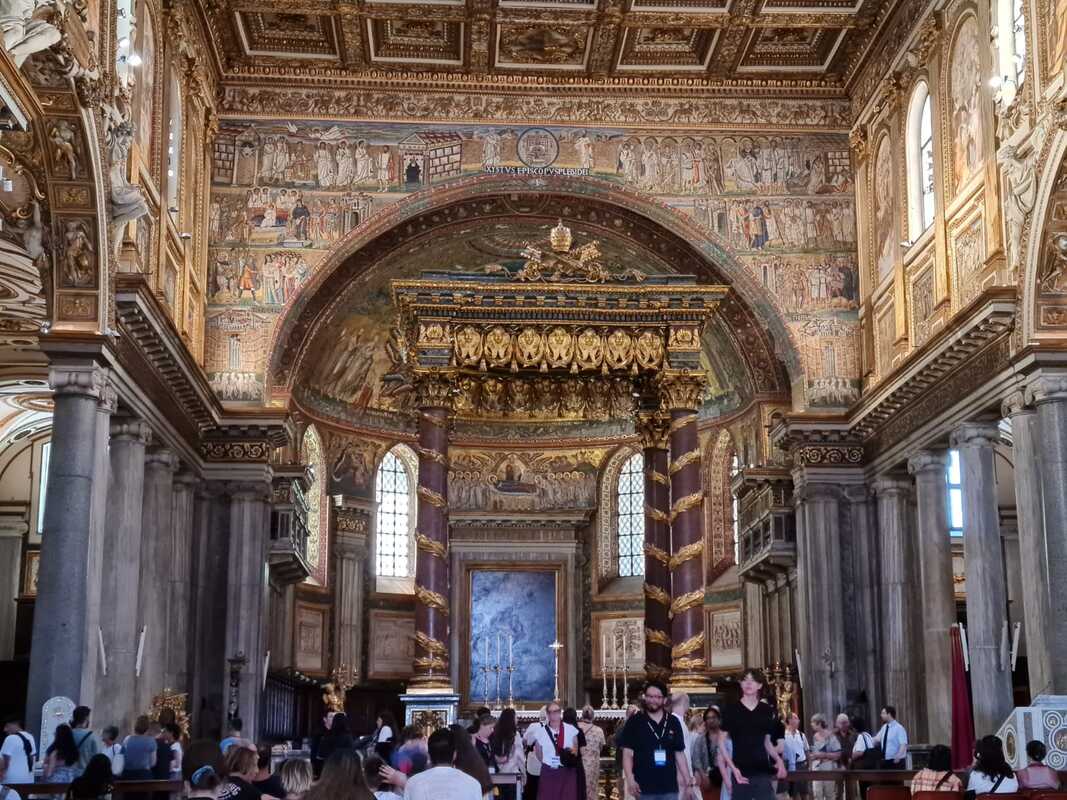
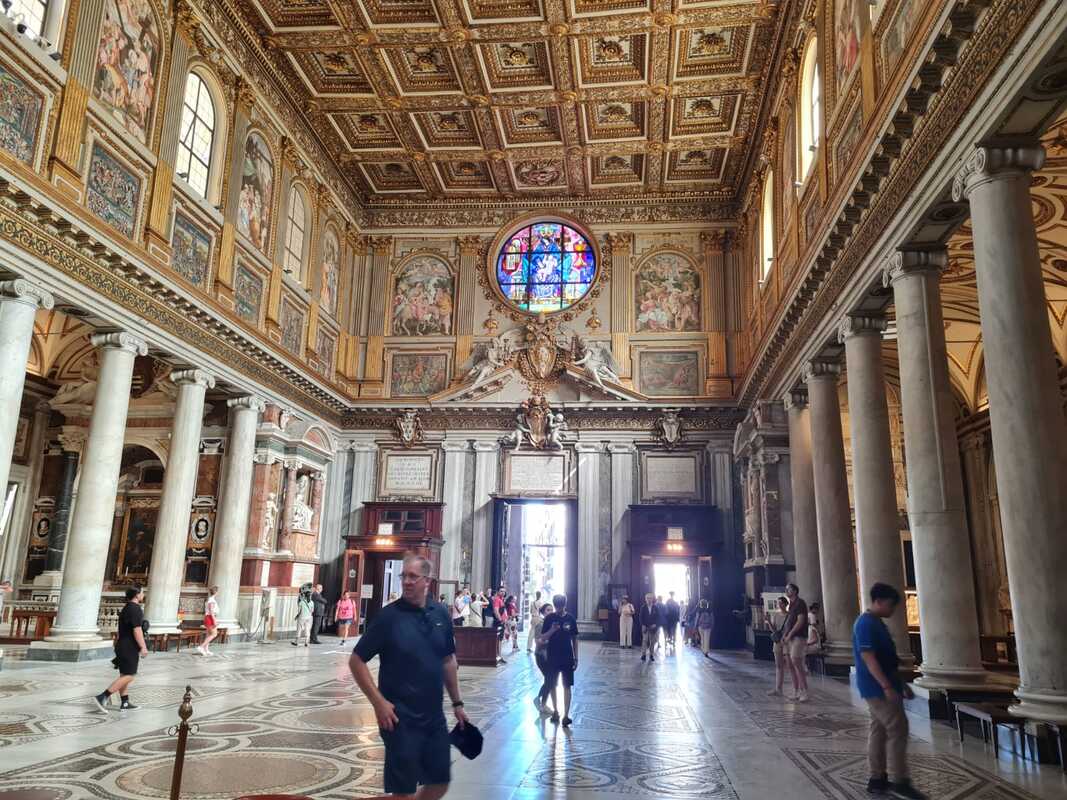
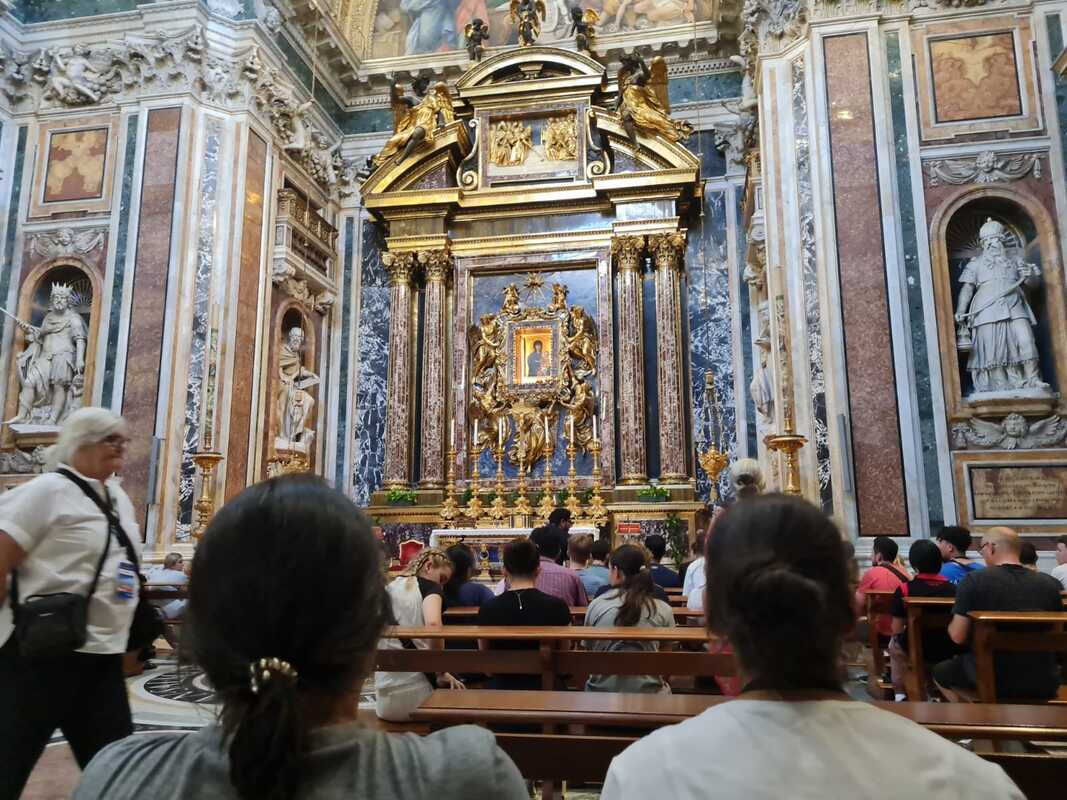
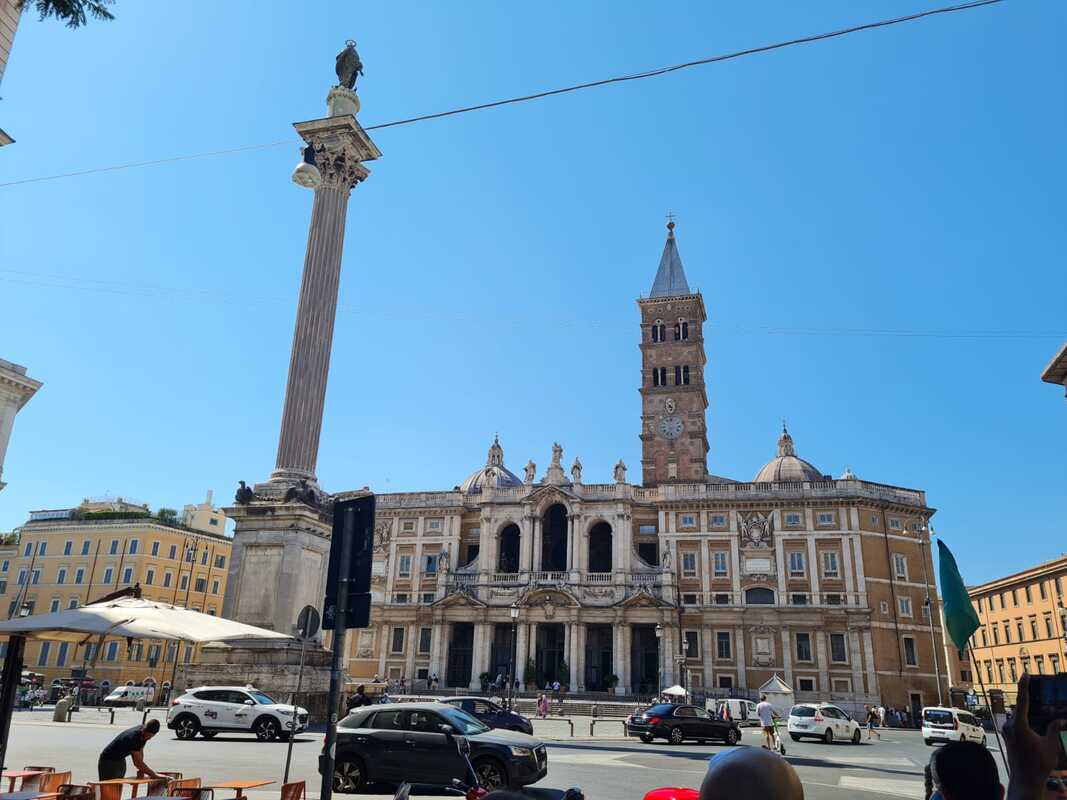
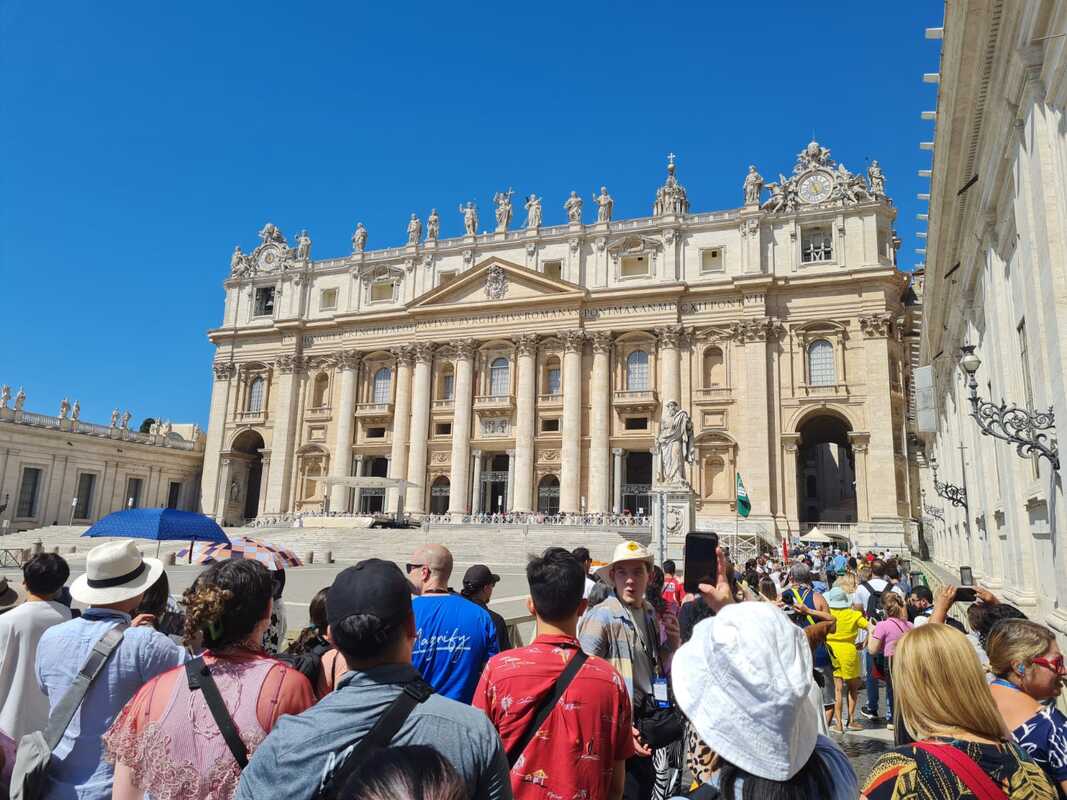
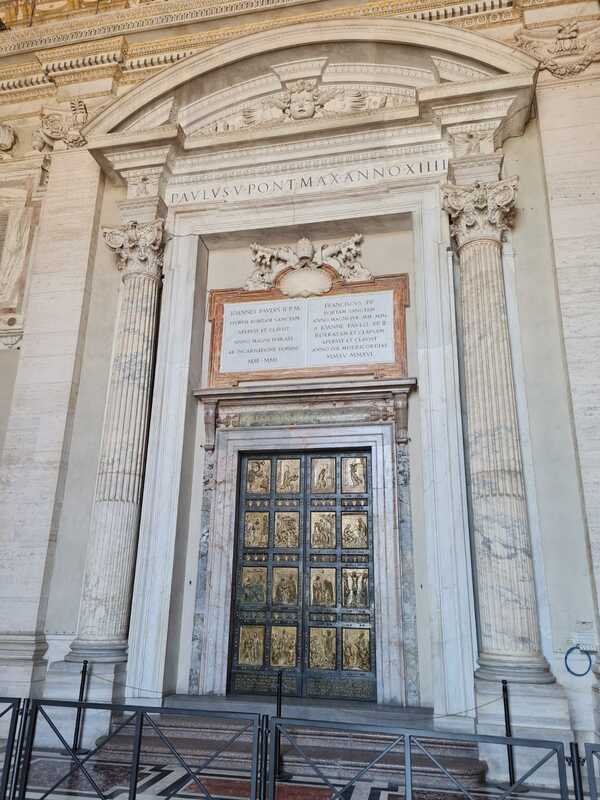
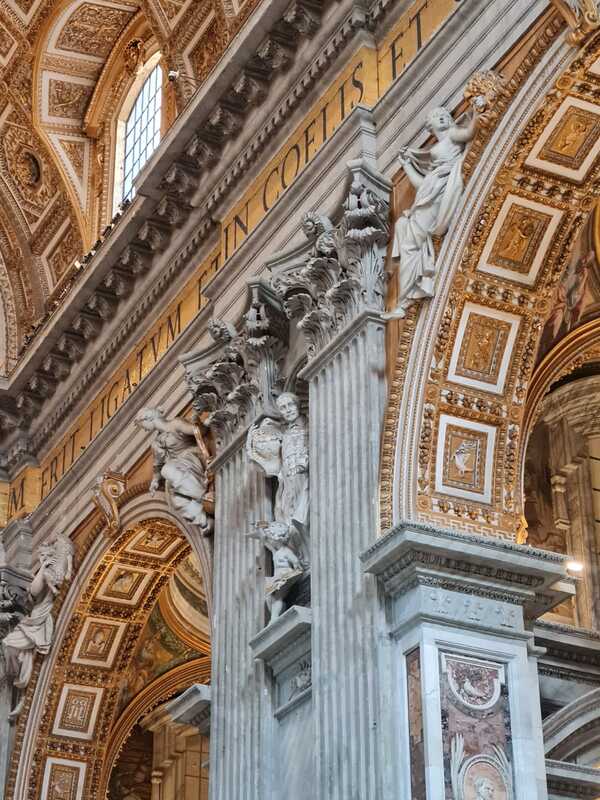
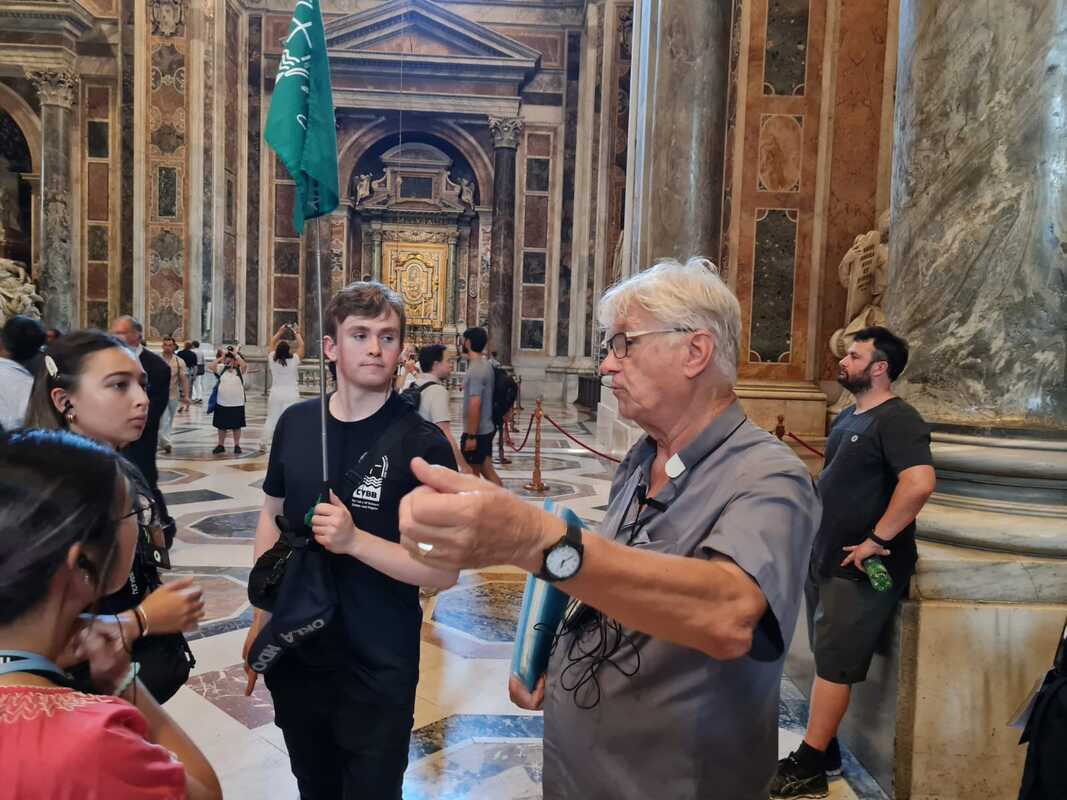
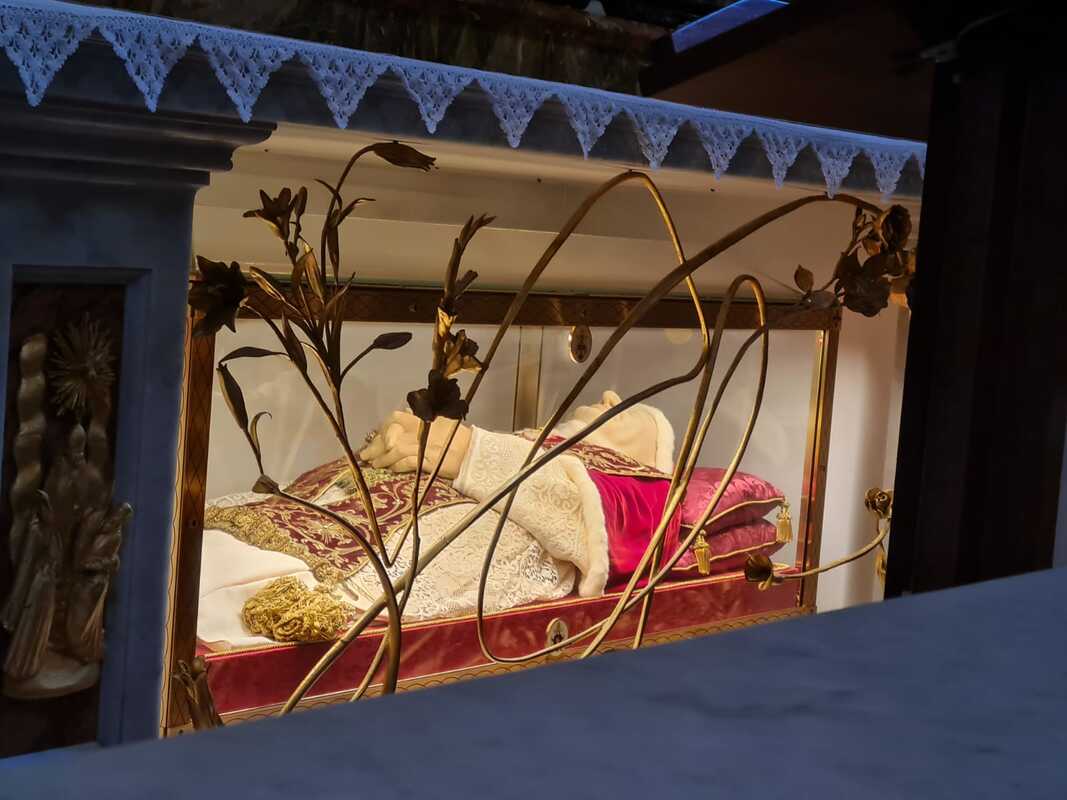
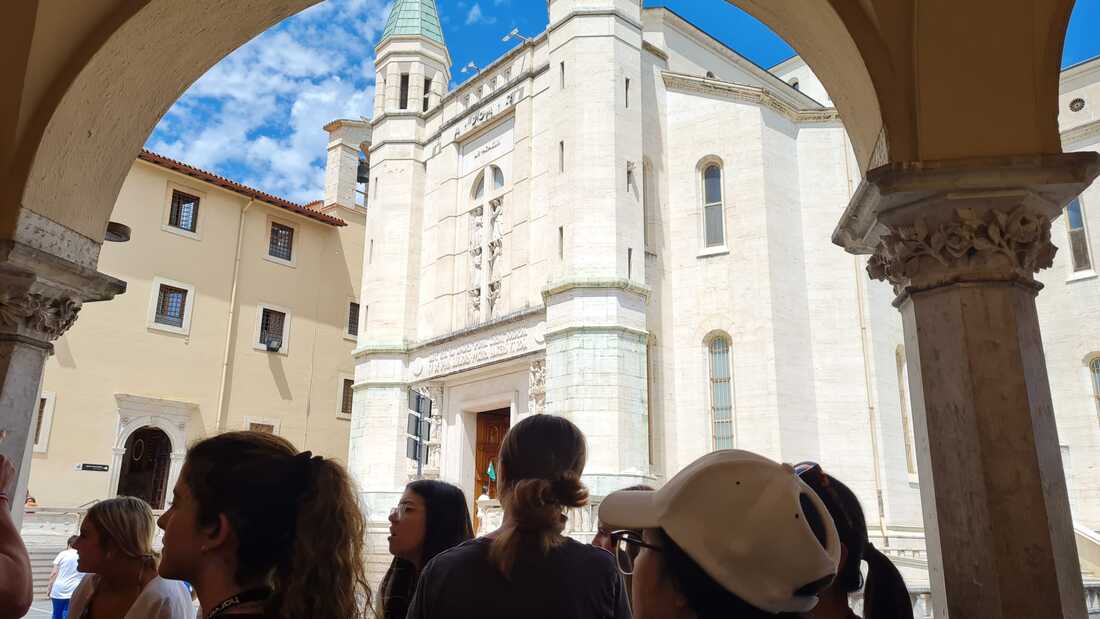
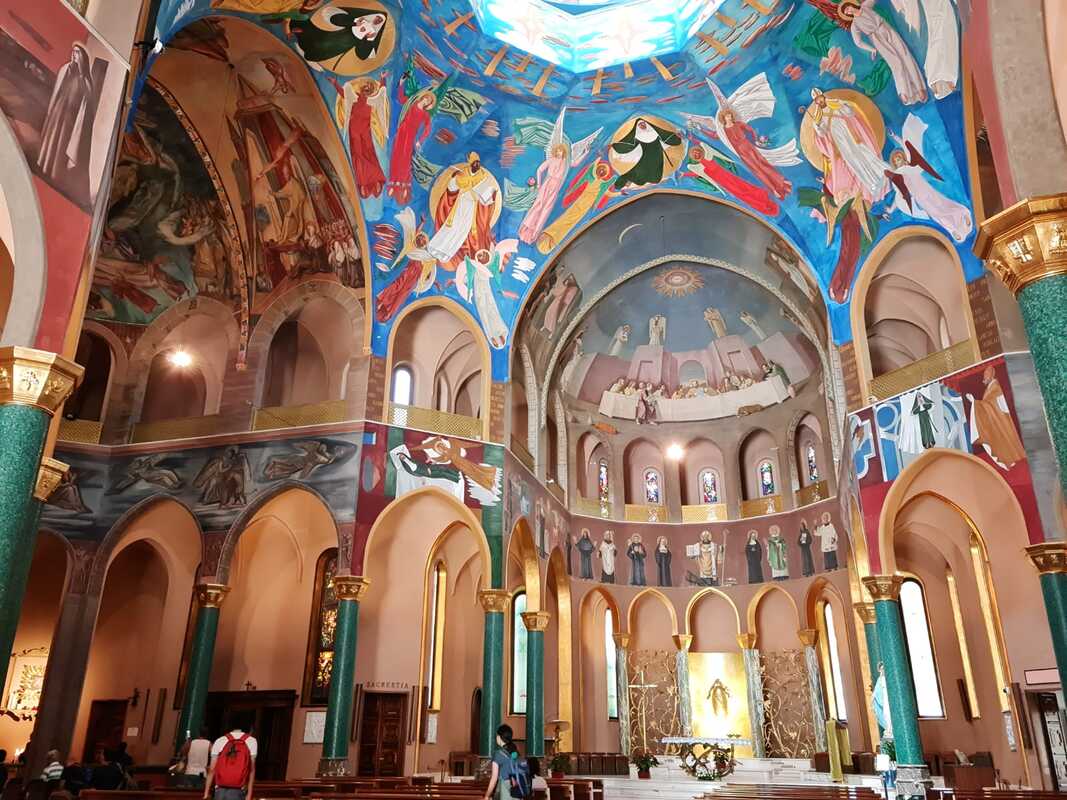
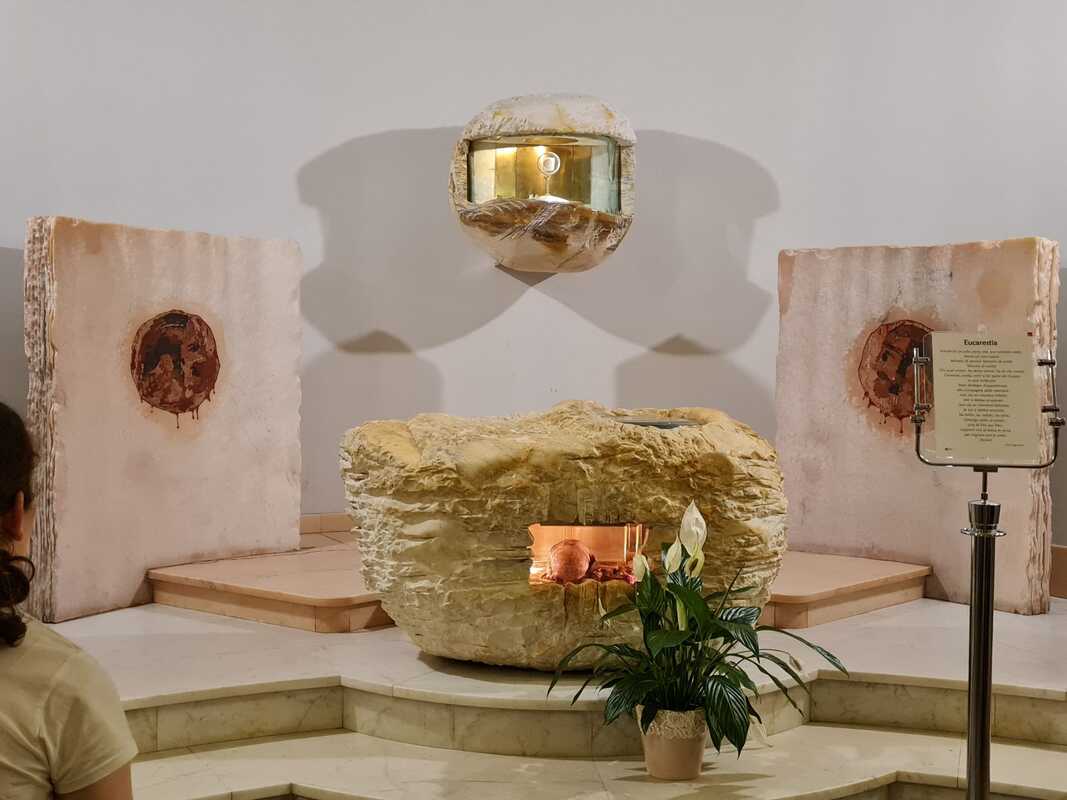
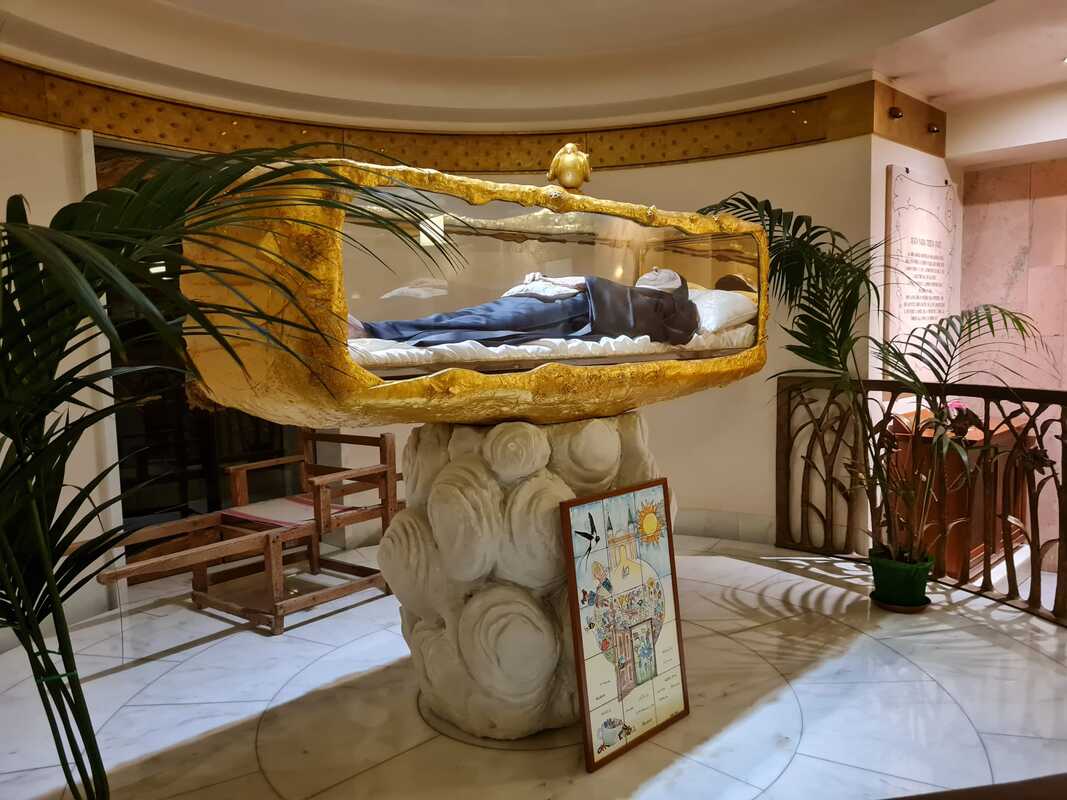
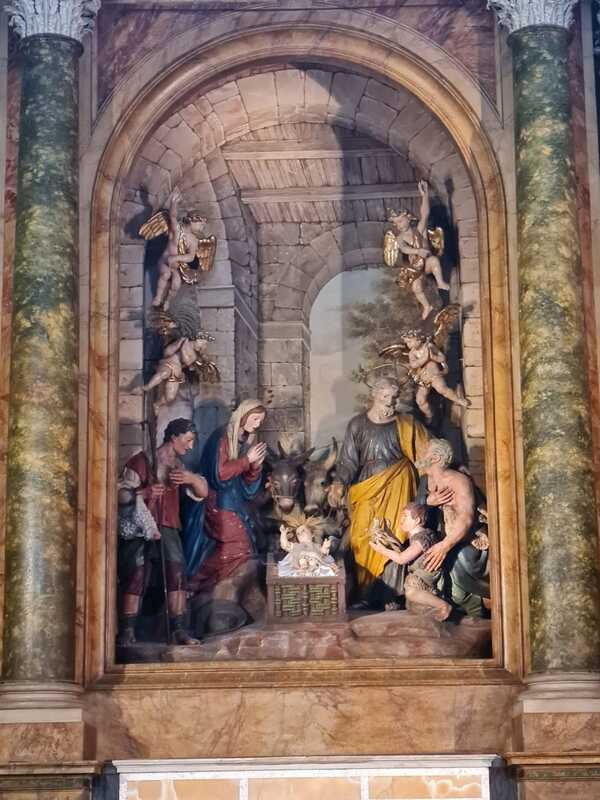
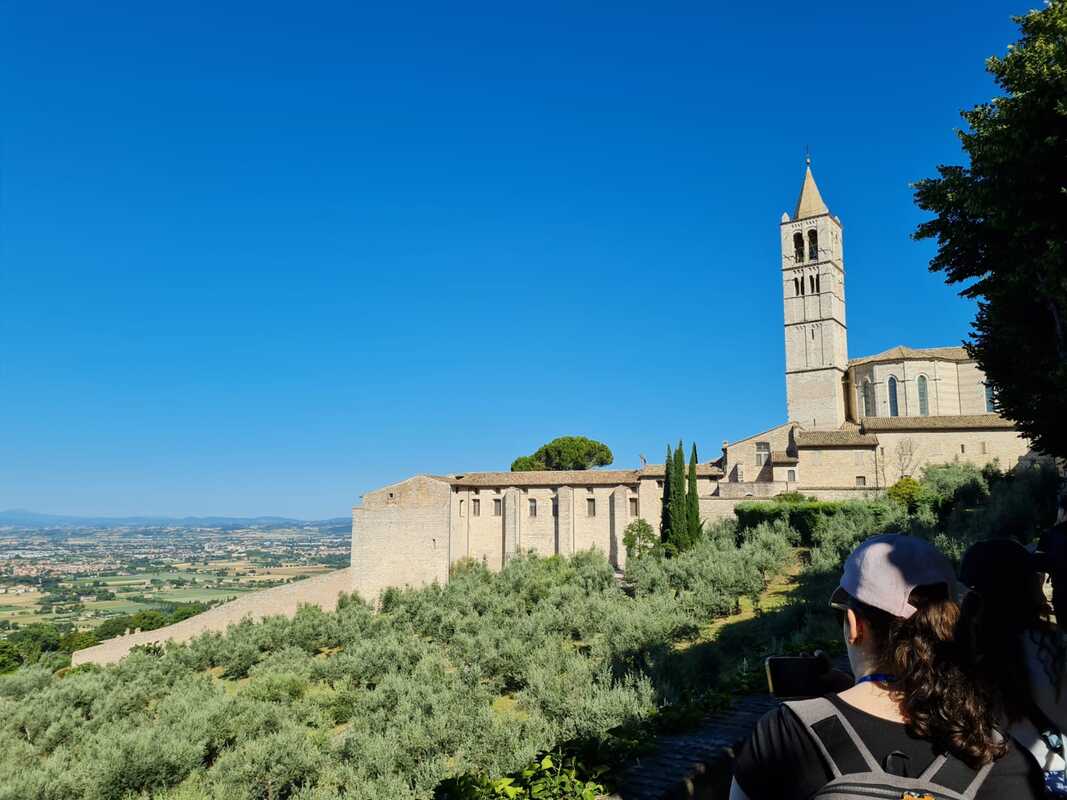
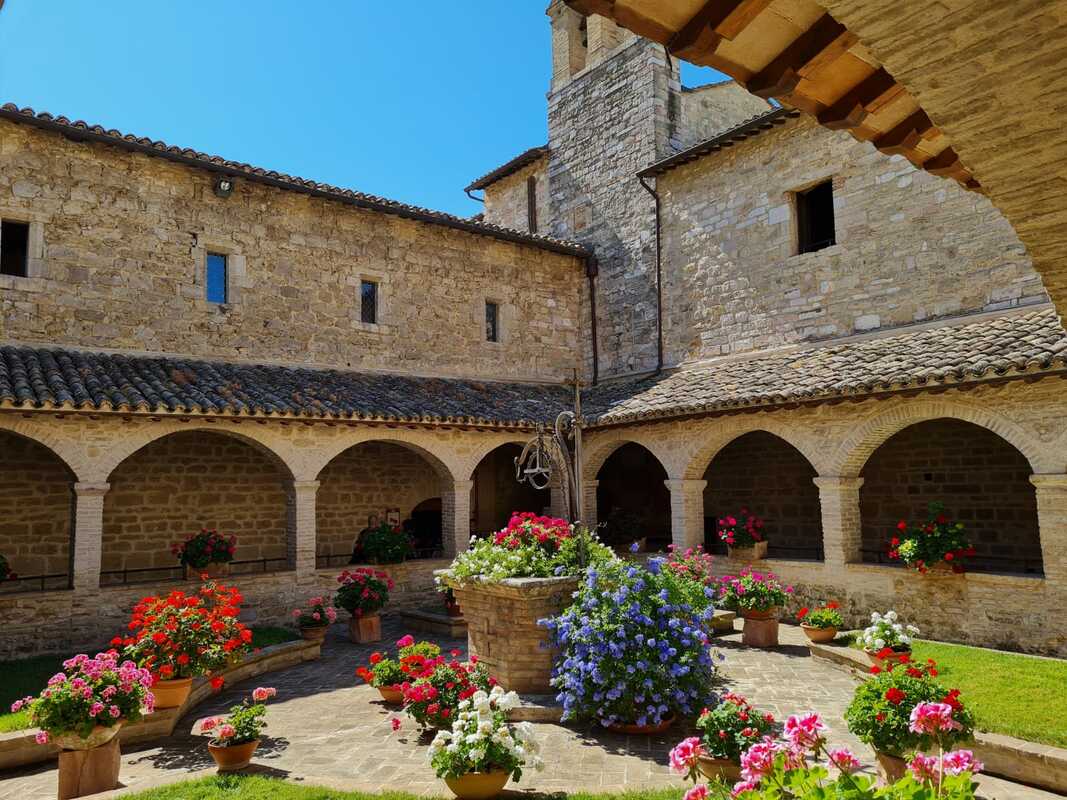
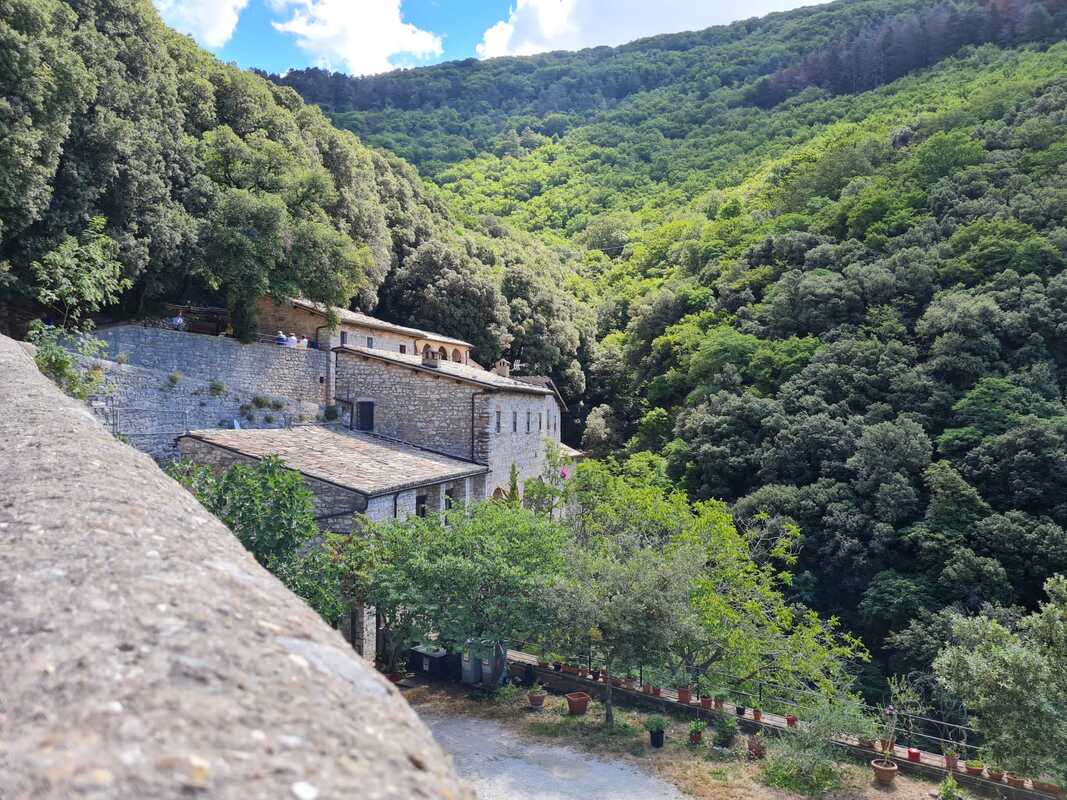
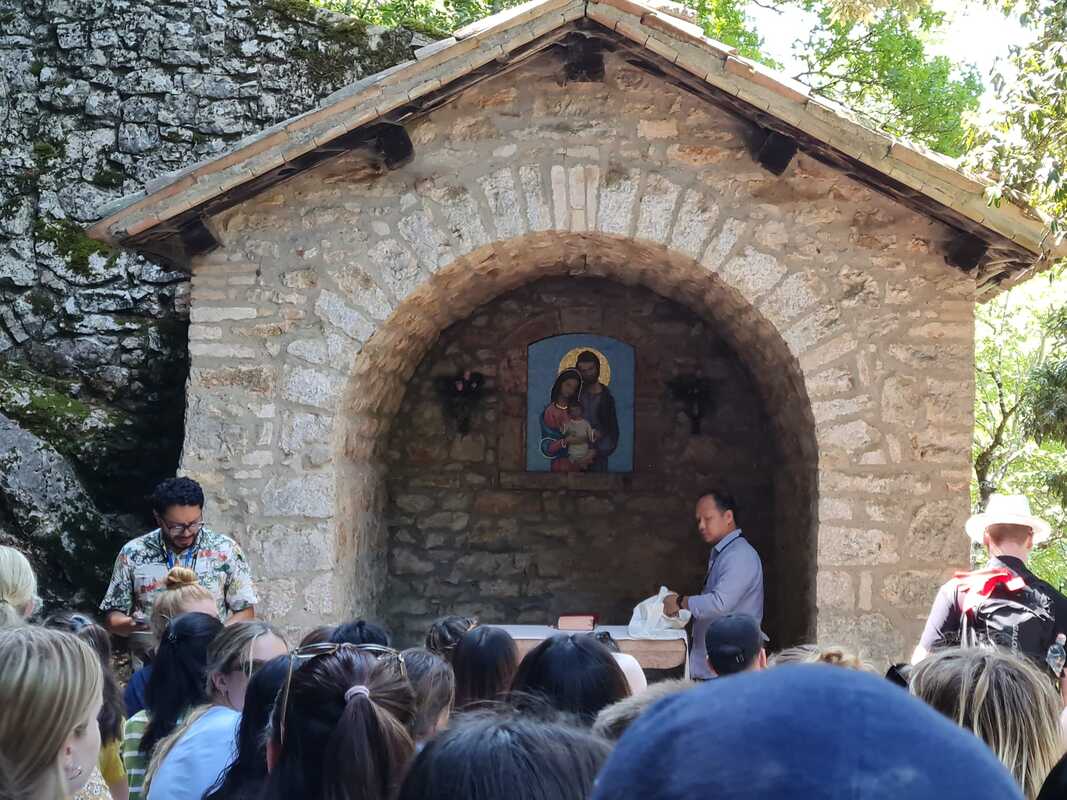
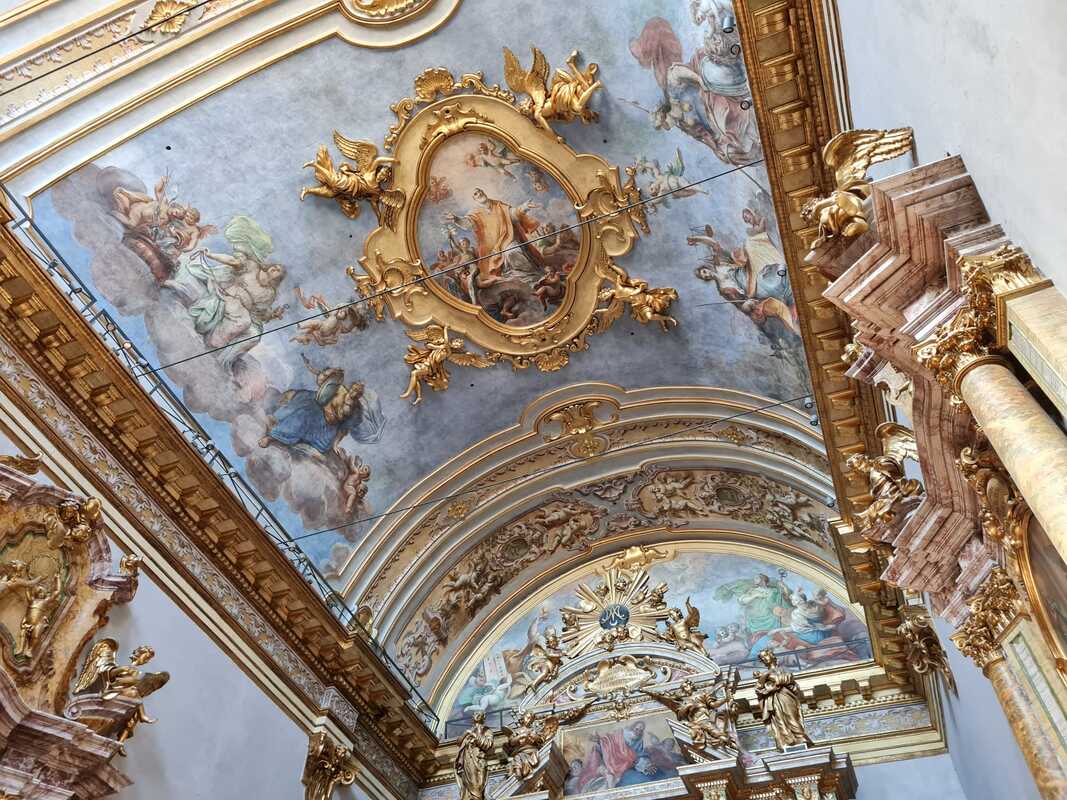
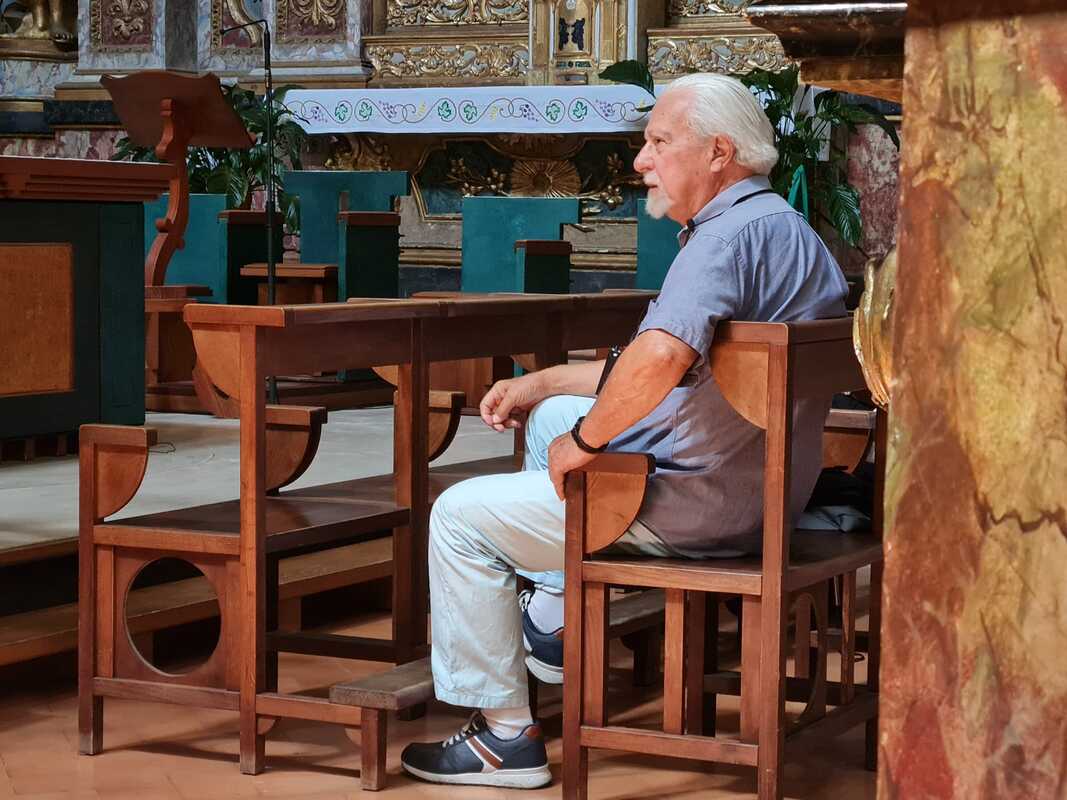
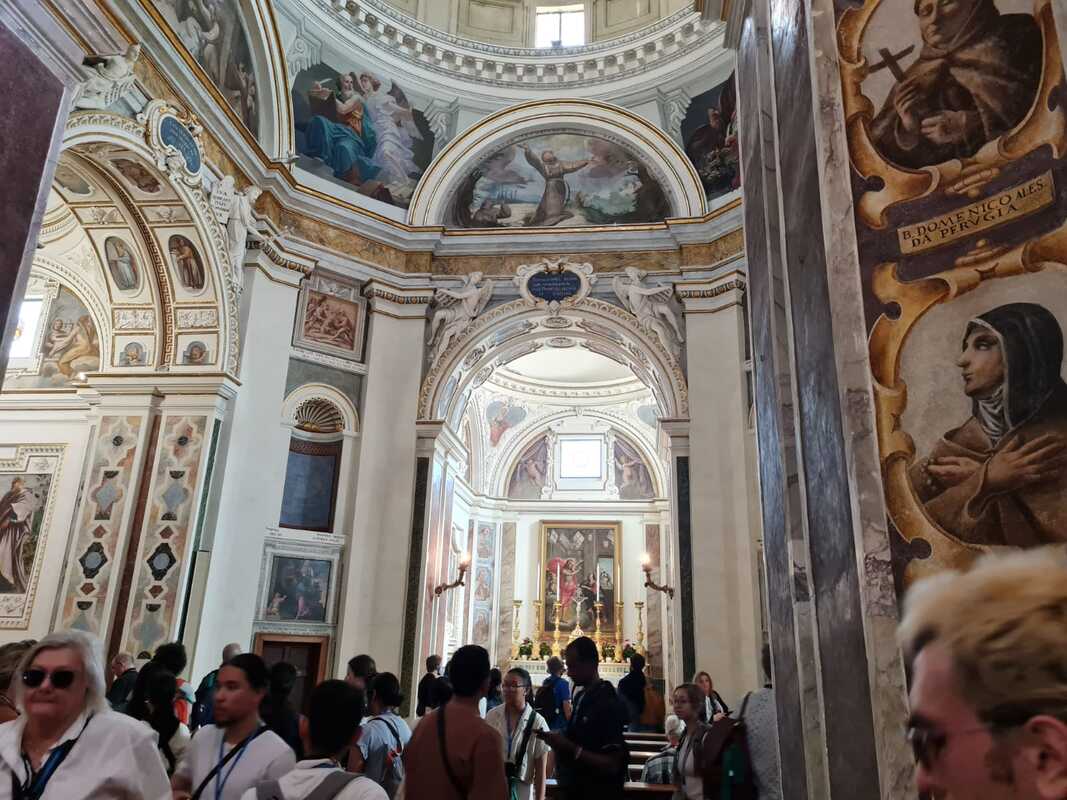
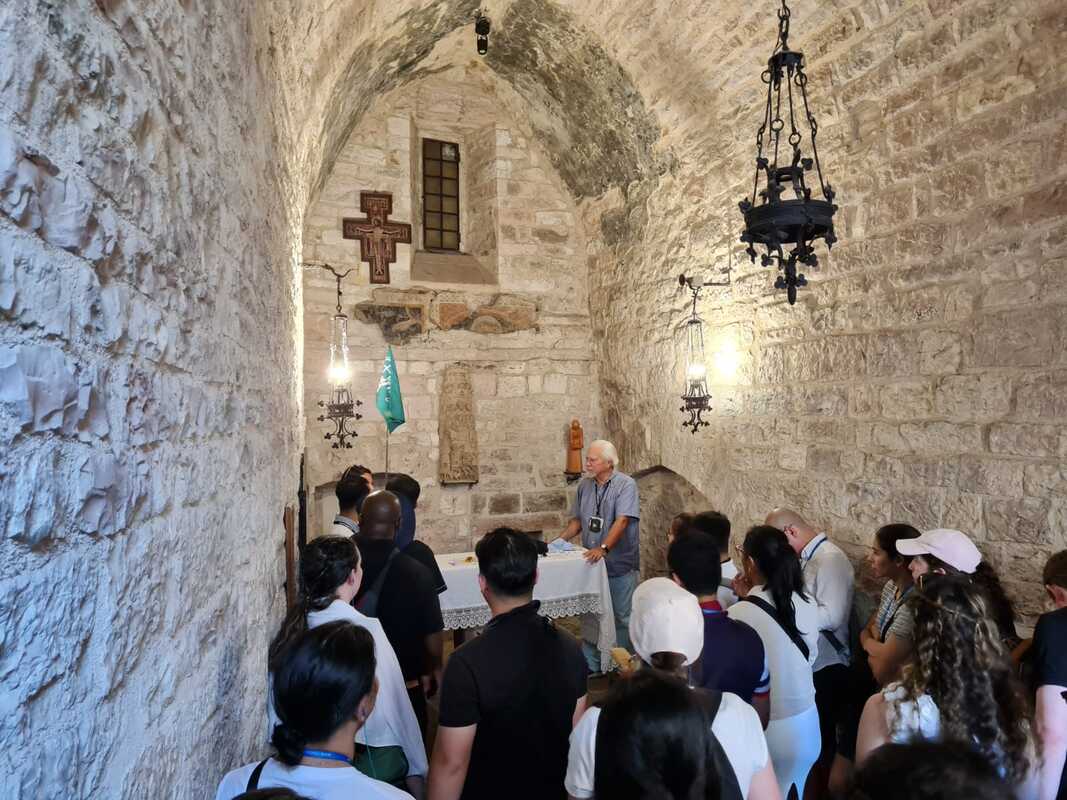
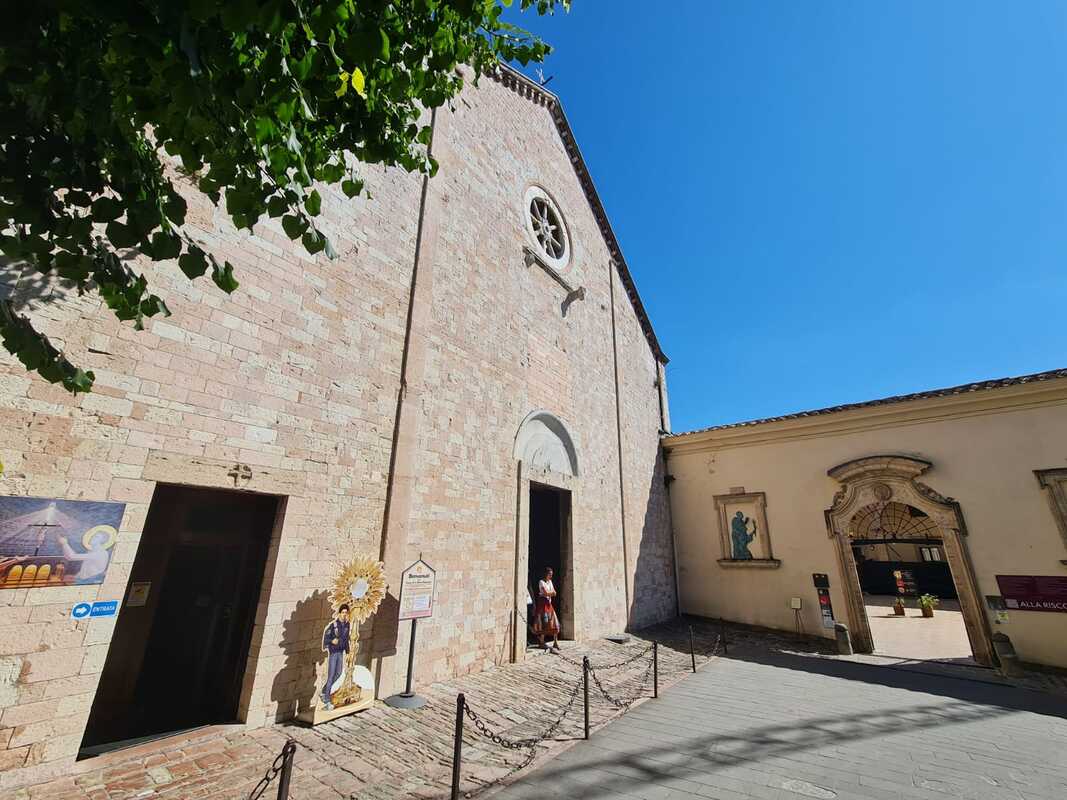
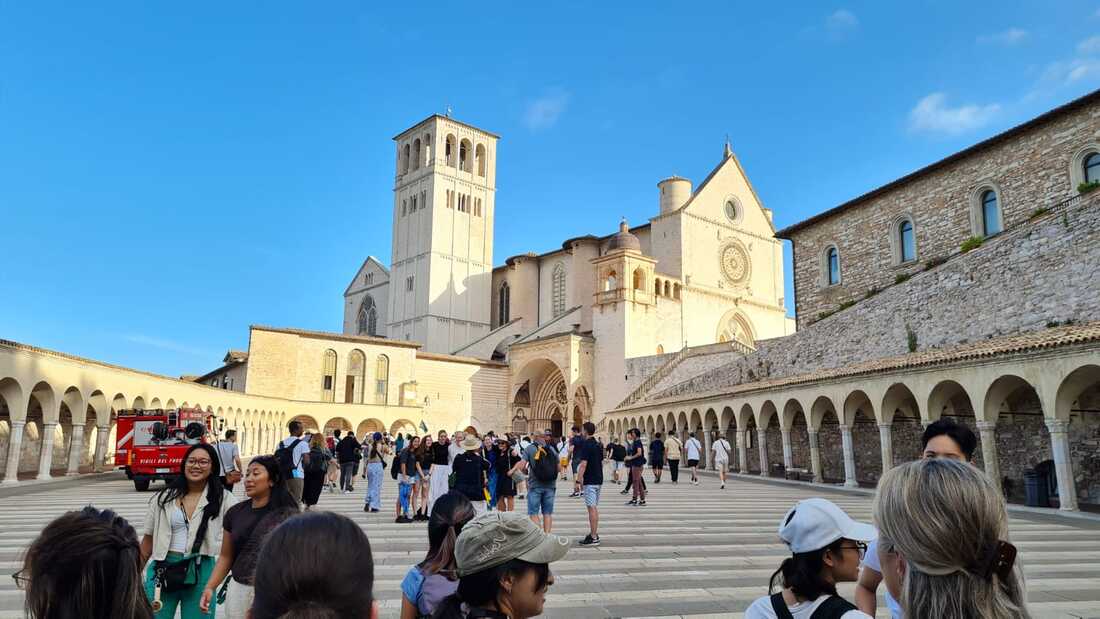
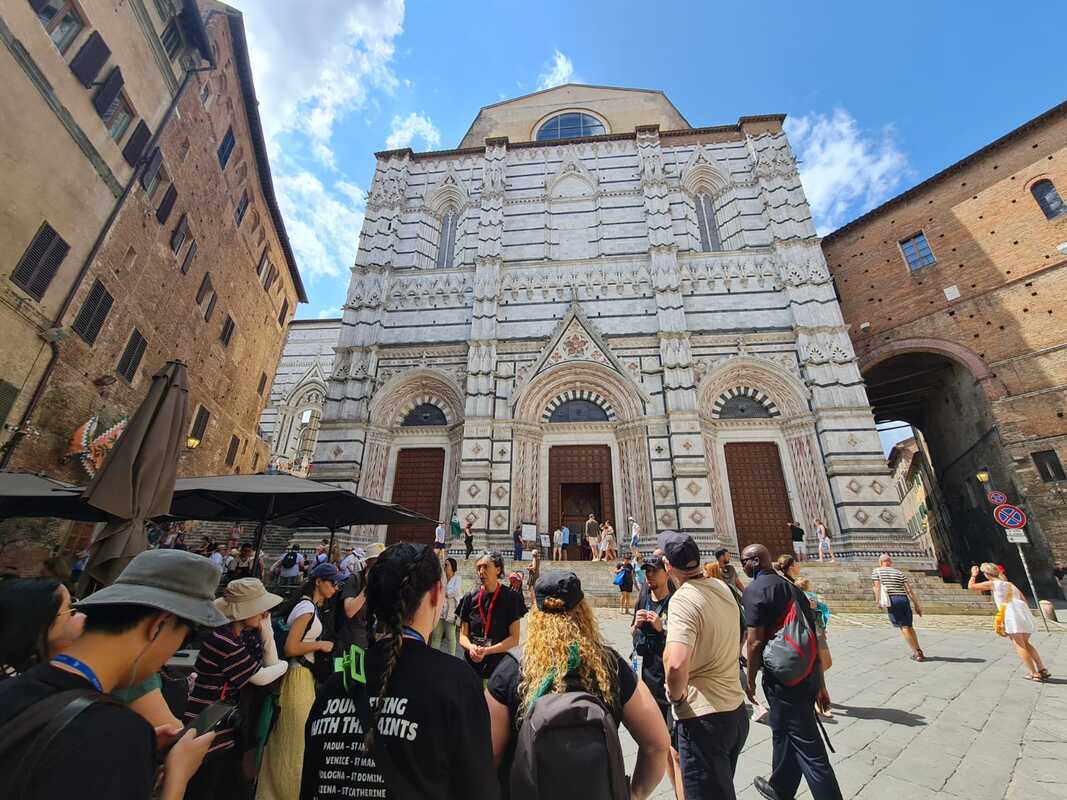
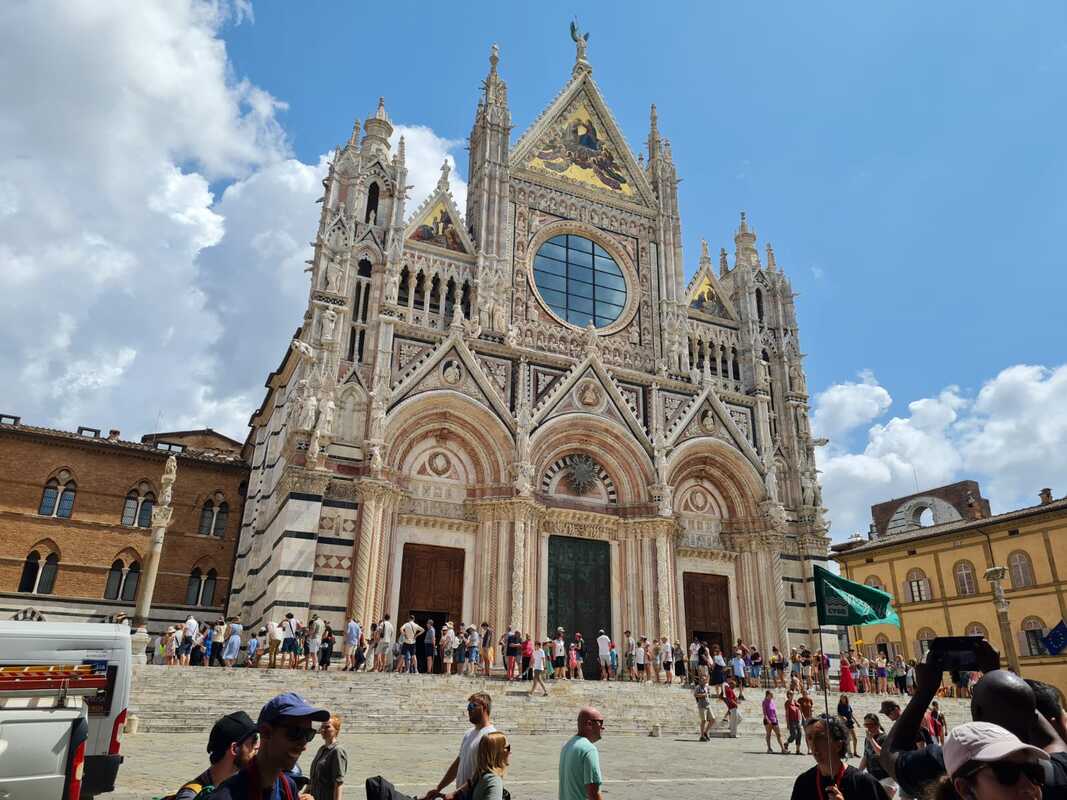
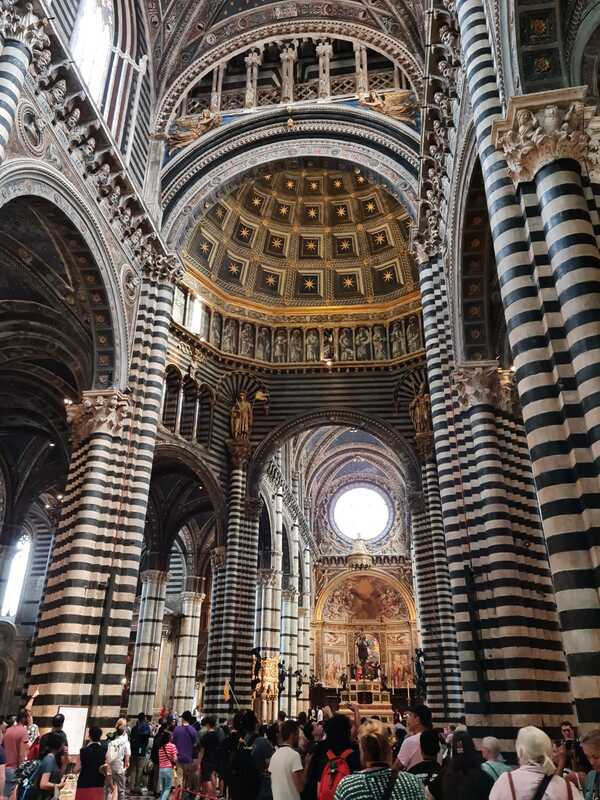
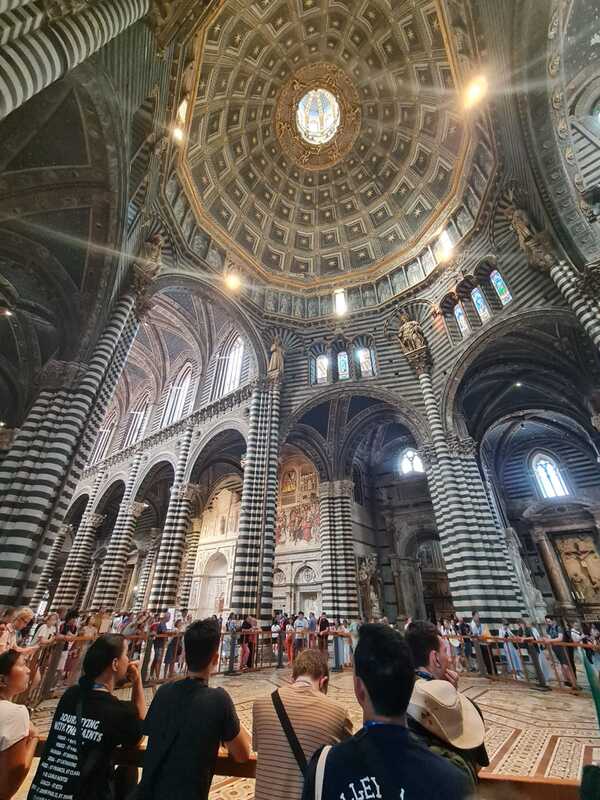
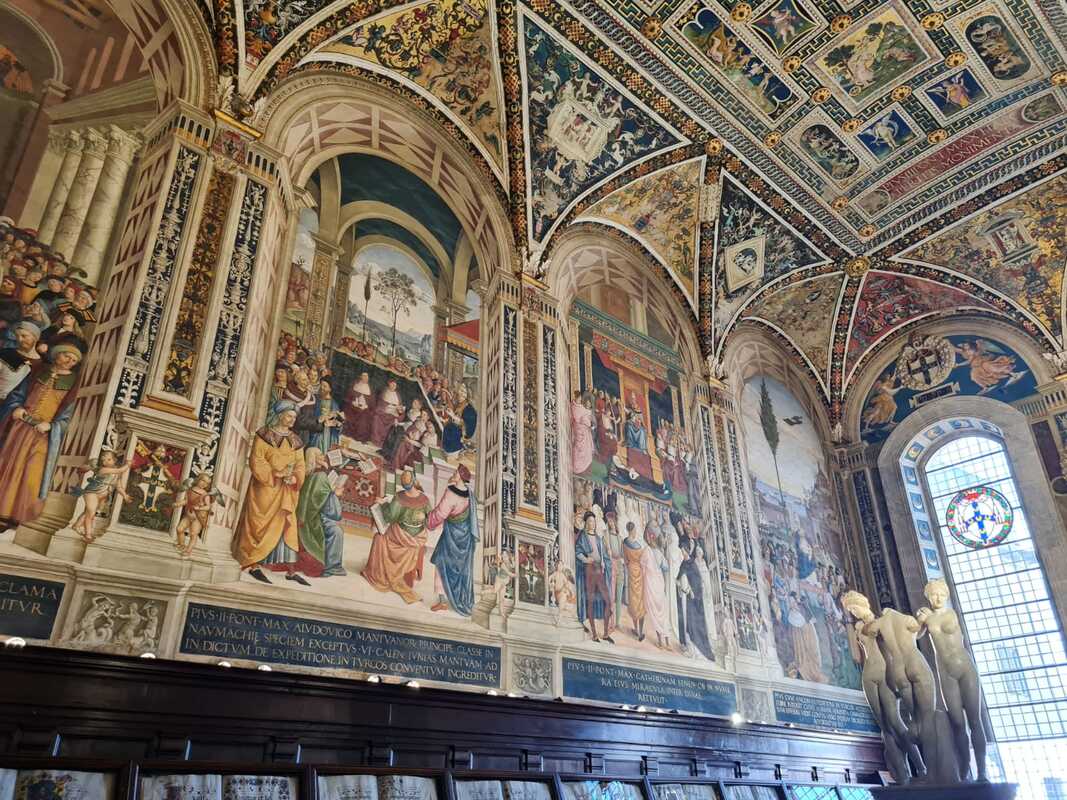
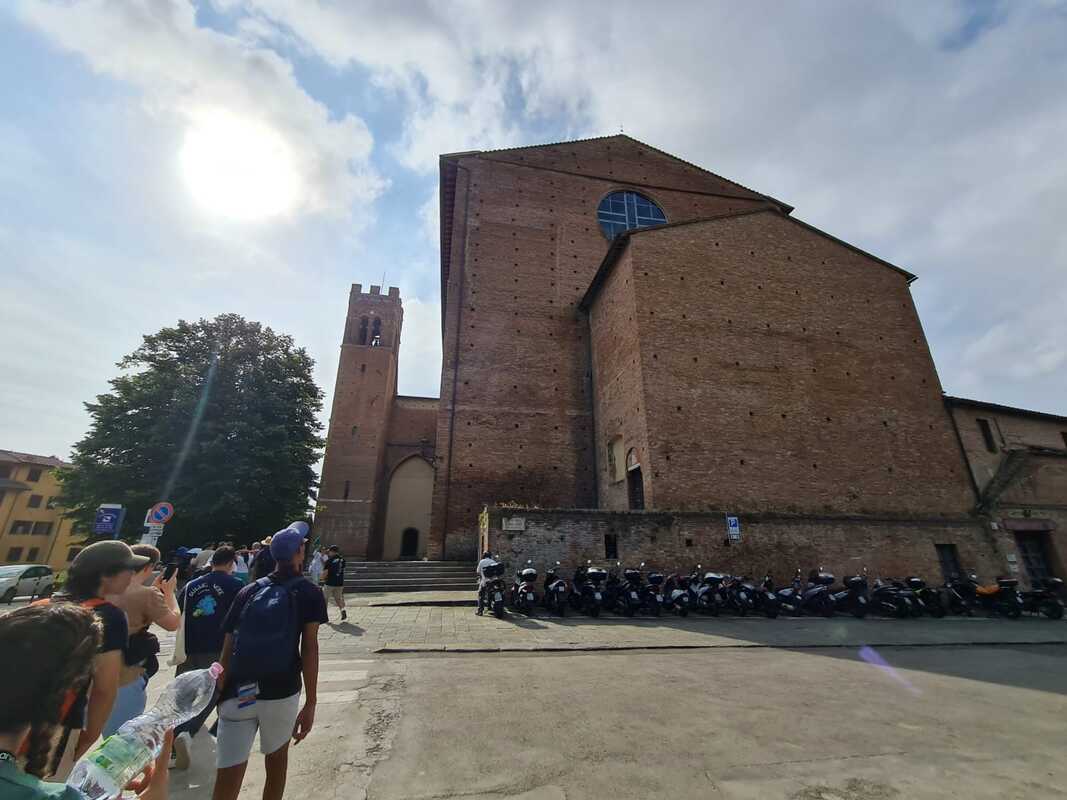
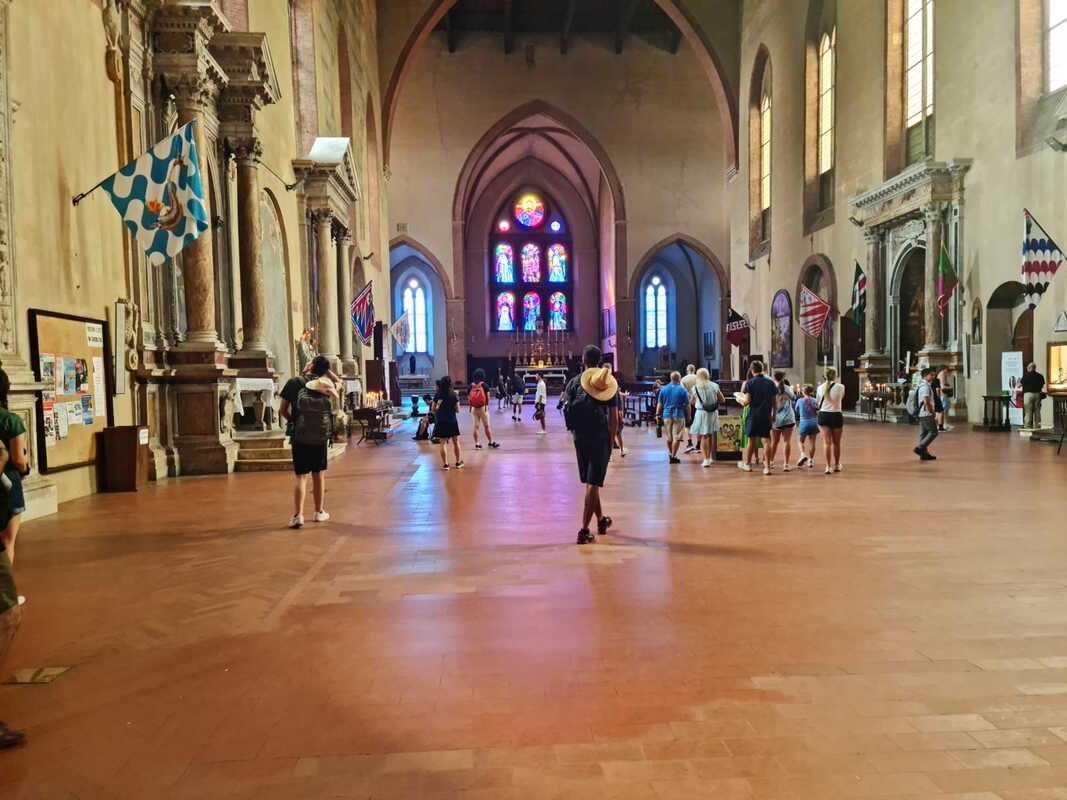
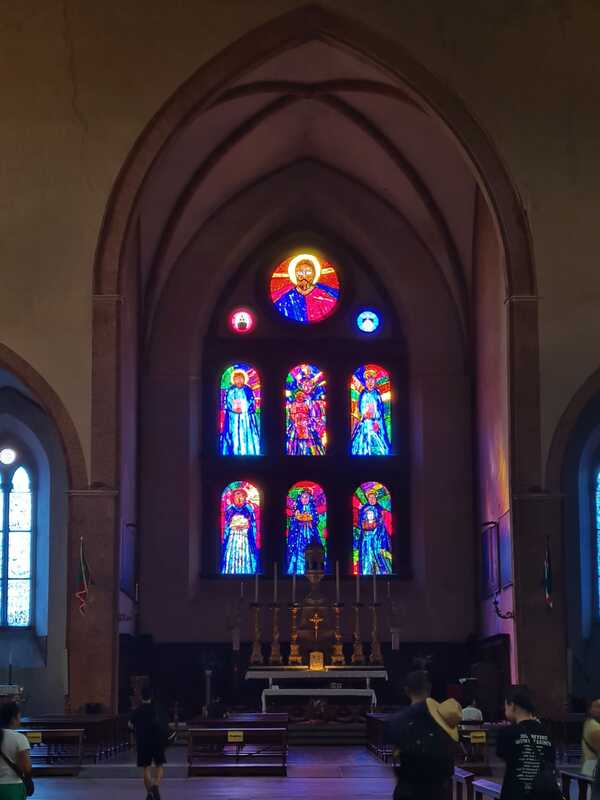
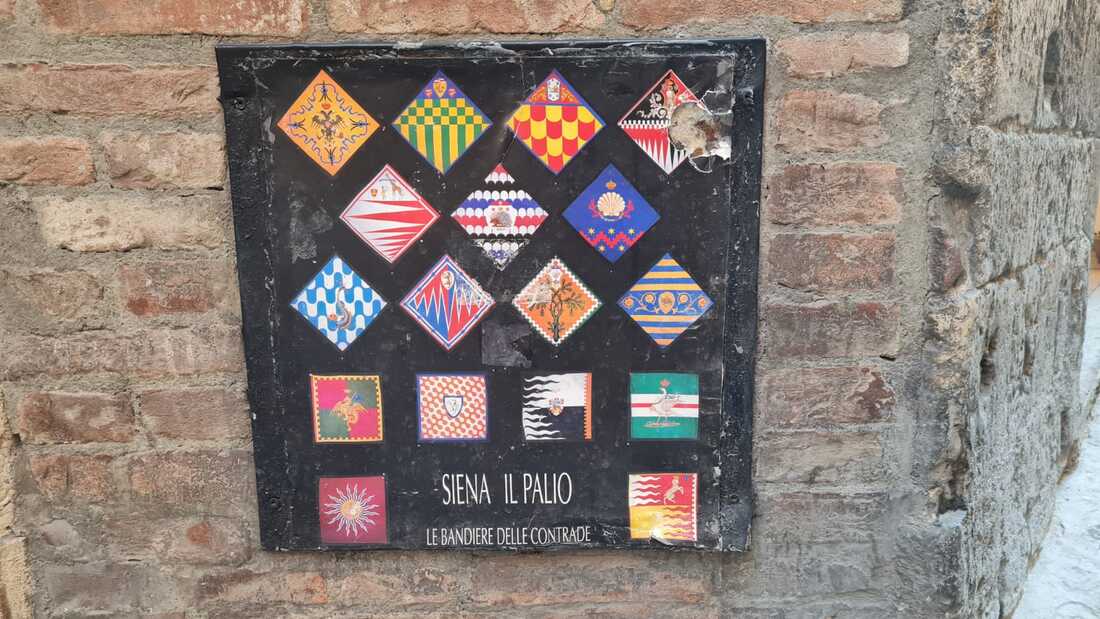
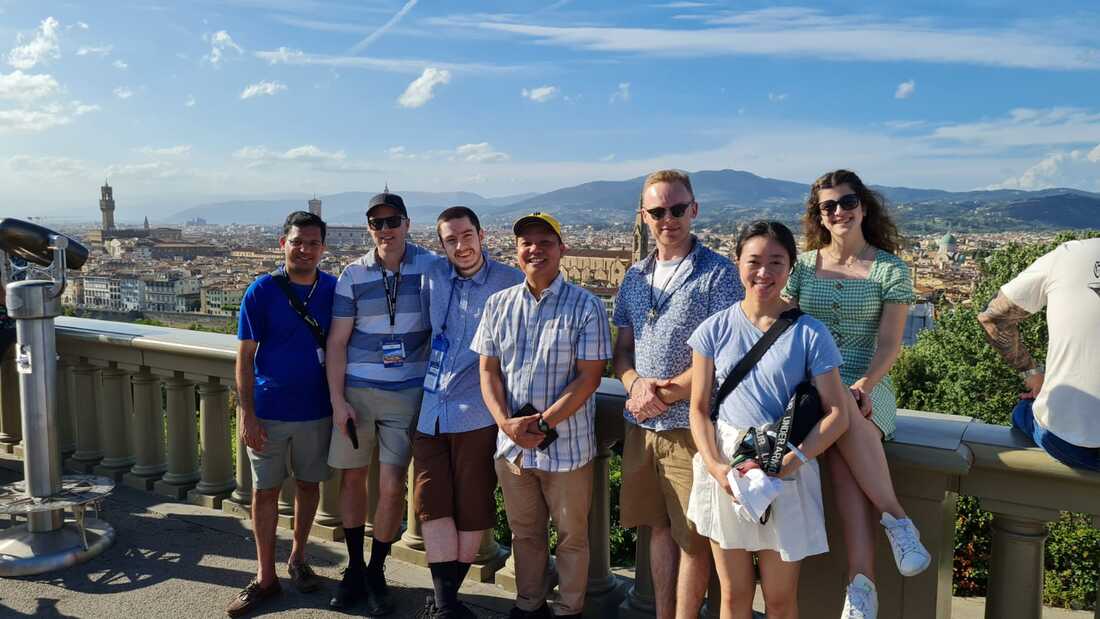
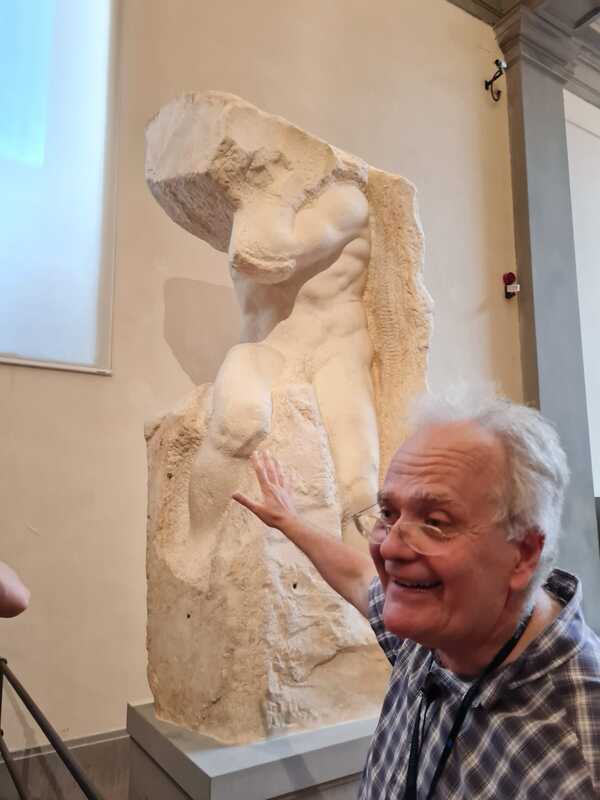
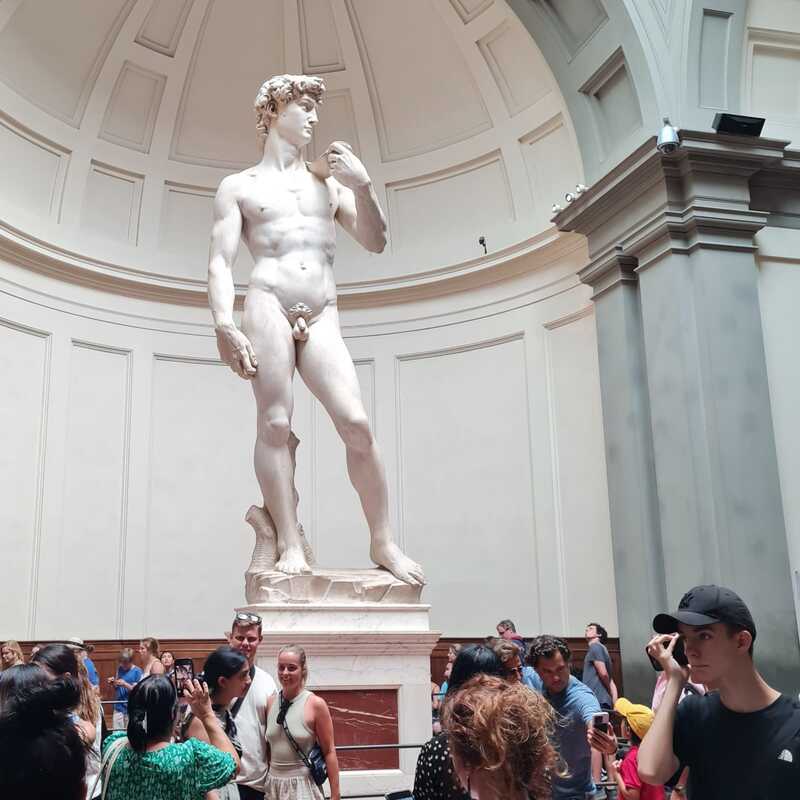
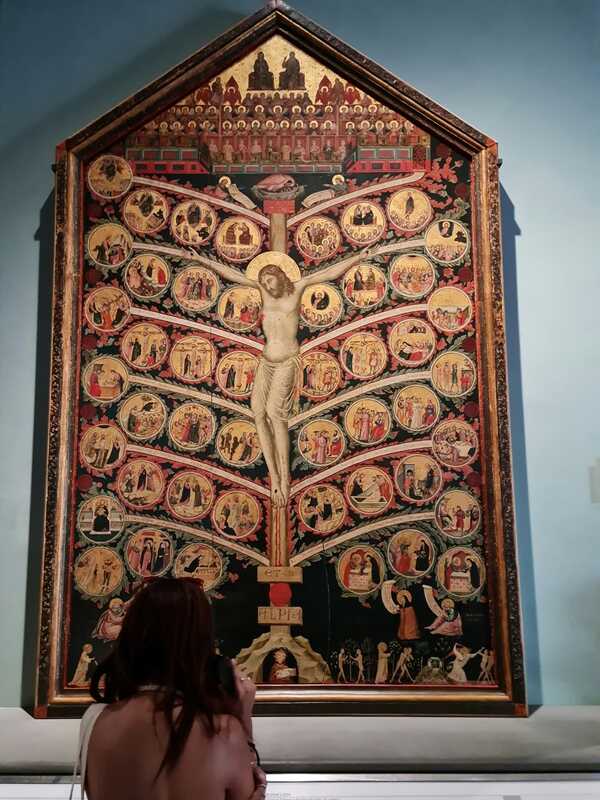
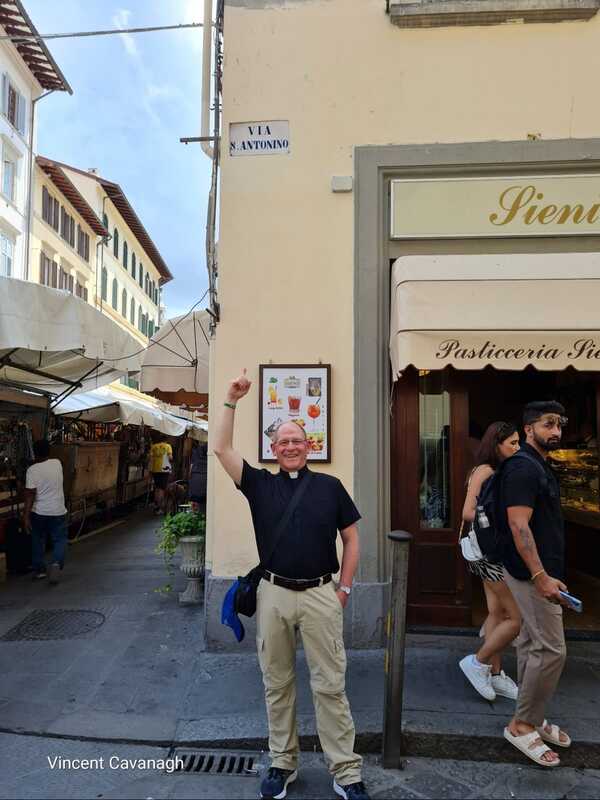
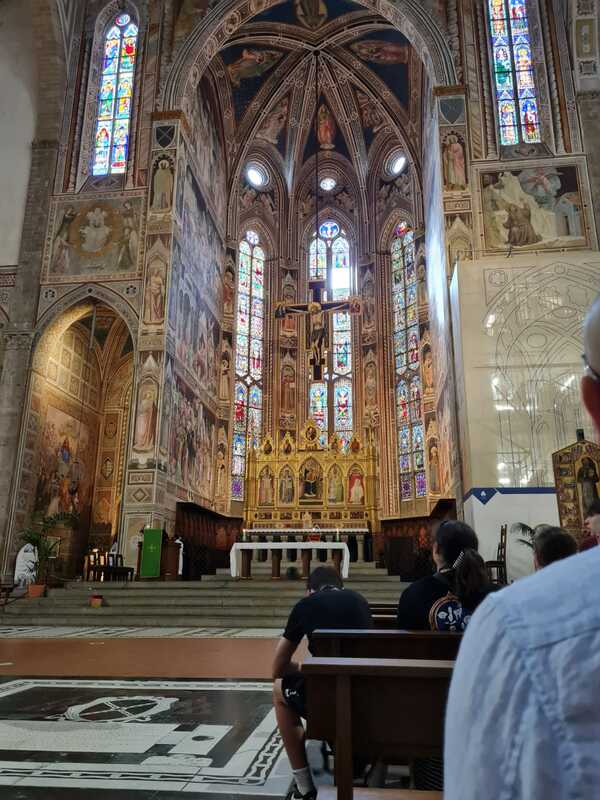
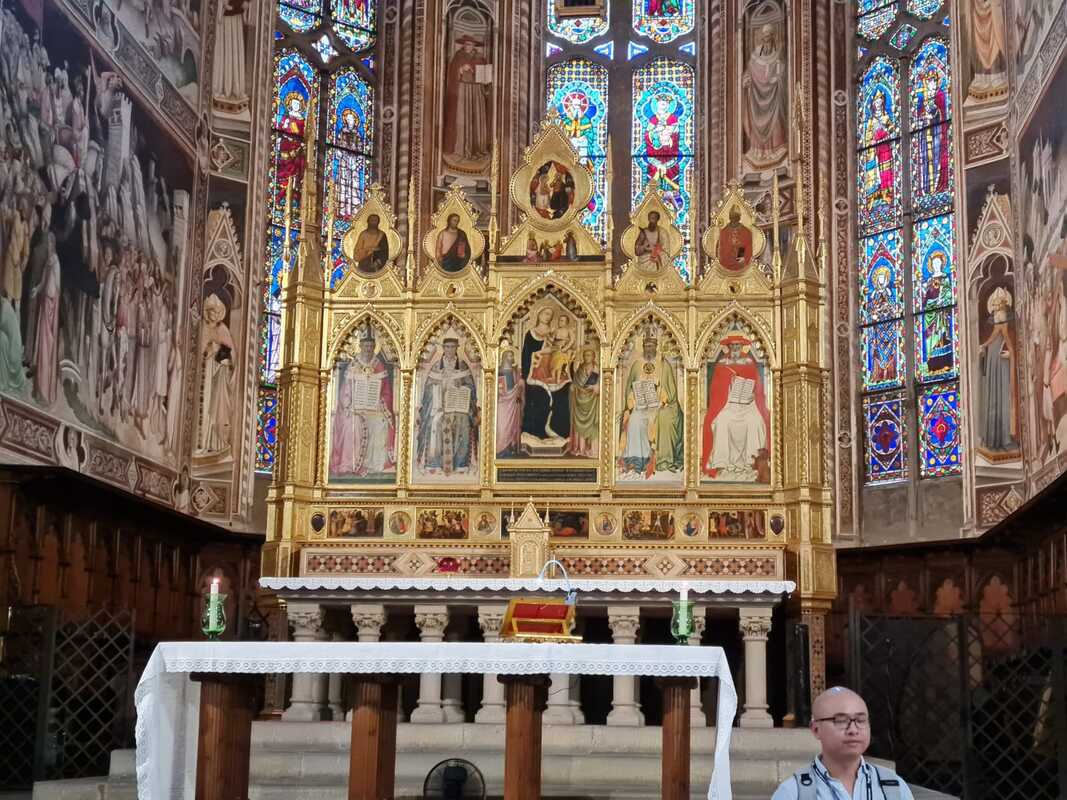
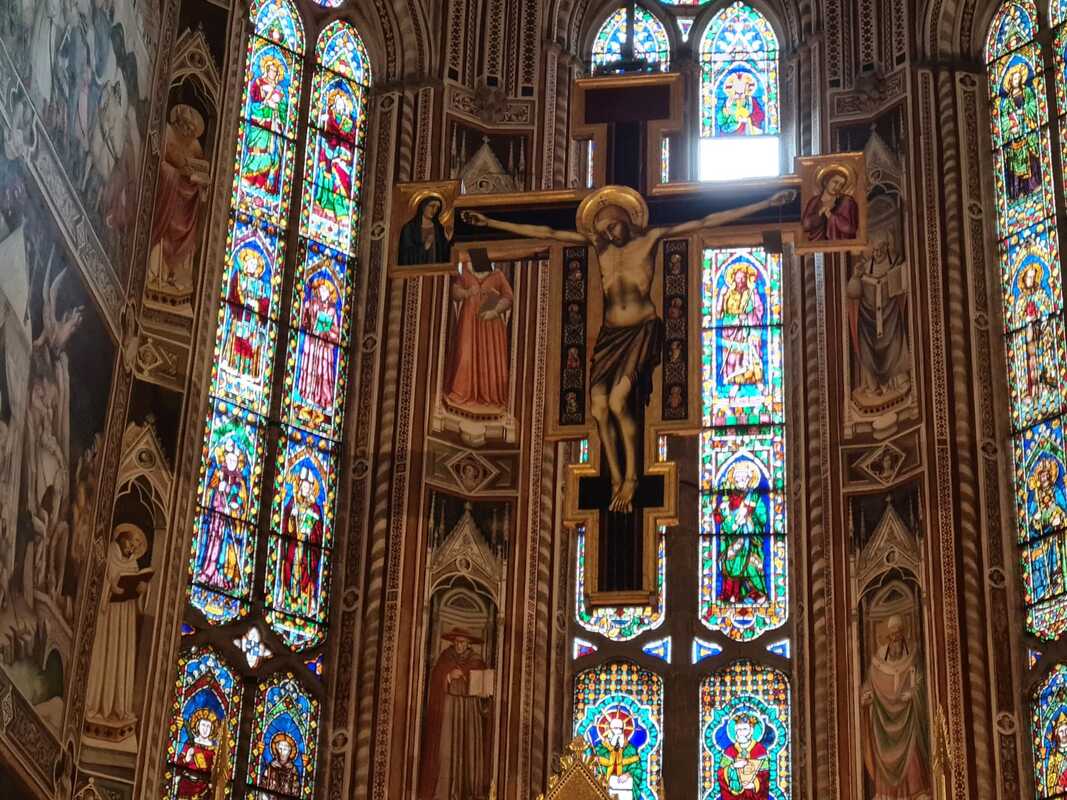
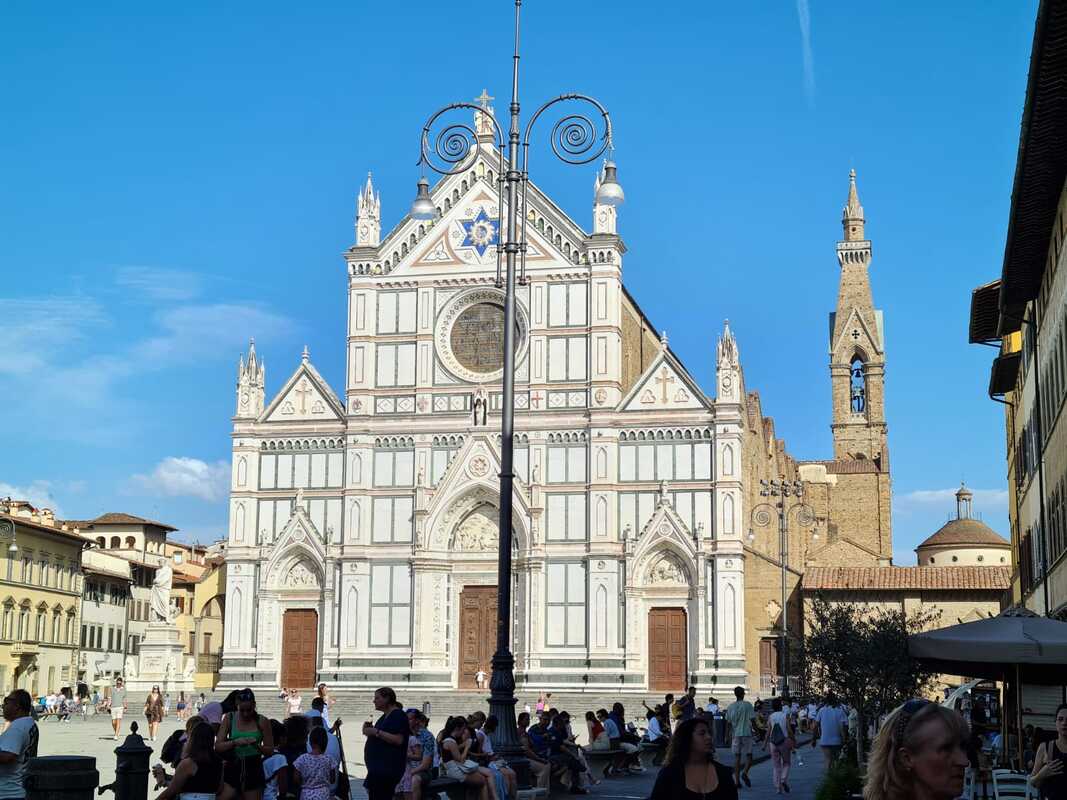

 RSS Feed
RSS Feed